
Introduction: Relaxing destinations

Relaxing destinations,land steeped in ancient history and enigmatic wonders, beckons travelers from across the globe. From the colossal pyramids of Giza to the tranquil oases nestled in the heart of the desert, this North African gem offers an unparalleled blend of awe-inspiring sights and immersive experiences.

While Egypt is celebrated for its archaeological marvels and bustling cities, it also holds a secret known to seasoned travelers:
its ability to provide some of the most serene and relaxing getaways. In the midst of this historically rich tapestry lie pockets of tranquility that offer respite from the demands of everyday life.
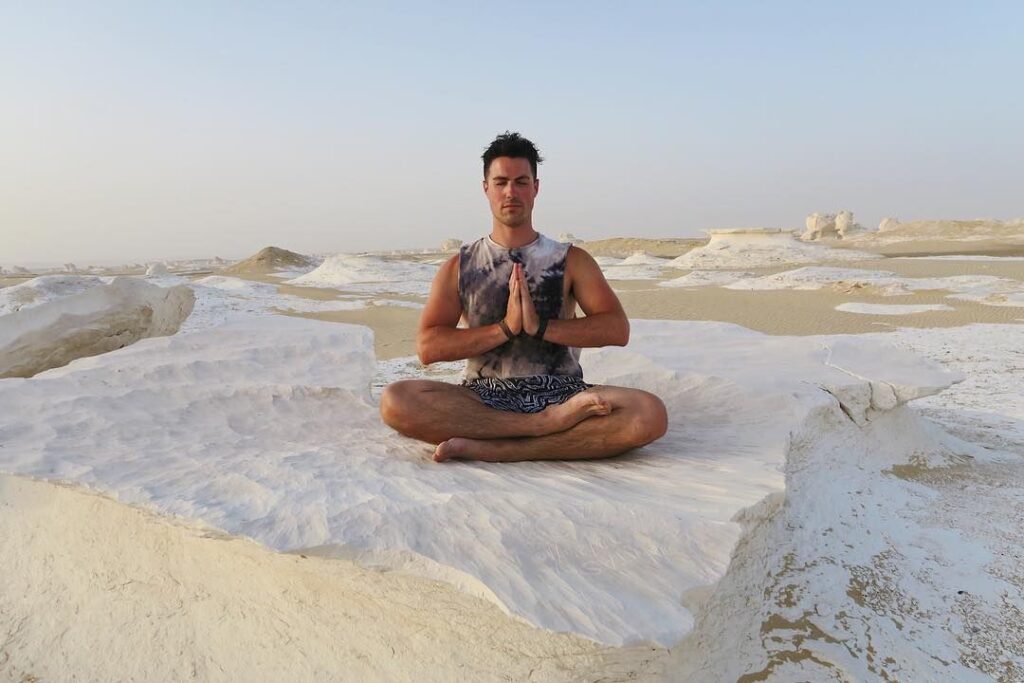
In the modern world, where stress often accompanies our daily routines, the importance of relaxation in travel cannot be overstated. It’s not just a luxury; it’s a necessity for our well-being. These moments of reprieve allow us to reconnect with ourselves, rejuvenate our spirits, and find solace in the gentle embrace of nature.
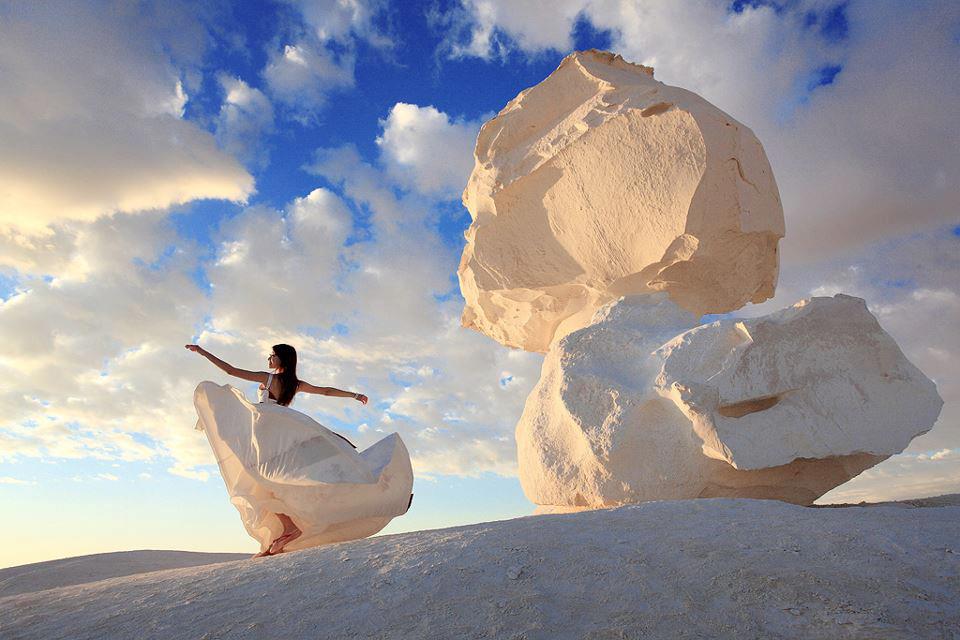
This article is a curated guide to the Top 7 Most Relaxing Destinations in Egypt. We will venture beyond the well-trodden paths and uncover the hidden havens that promise a peaceful retreat for the weary traveler. Each destination offers a unique blend of natural beauty, cultural richness, and a slower pace of life, inviting you to unwind and immerse yourself in the essence of serenity.

Whether you’re seeking the rhythmic lullaby of lapping waves or the stillness of ancient landscapes, these destinations hold the promise of an unforgettable journey. Join us as we embark on a voyage through Egypt’s most tranquil corners, where time seems to slow and the soul finds its sanctuary.
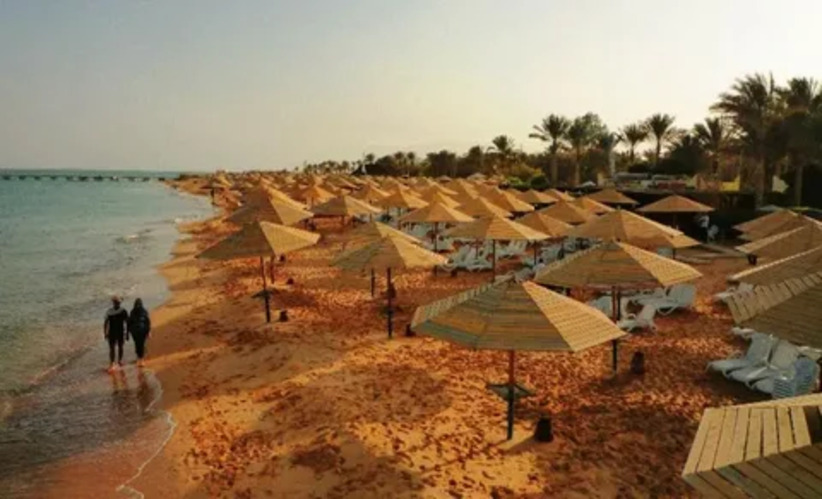
- Dahab: Where Tranquility Meets the Azure Coastline

Nestled on the southeastern coast of the Sinai Peninsula, Dahab emerges as a coastal haven of unparalleled beauty and serenity. Unlike its bustling counterparts, such as Sharm El Sheikh, Dahab has managed to retain a more laid-back, almost bohemian ambiance. This small town, whose name translates to “gold” in Arabic, lives up to its moniker by offering a treasure trove of relaxation and natural splendor.
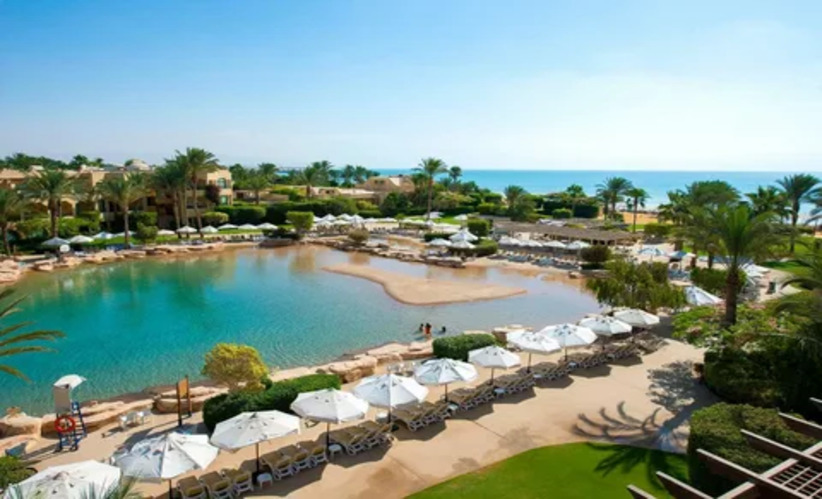
The first thing that strikes visitors to Dahab is its palpable tranquility. The pace of life here is noticeably slower, and the atmosphere exudes an almost ethereal calmness. The rhythmic ebb and flow of the Red Sea against the shoreline seem to set the tempo for Dahab’s unhurried way of life. It’s as if time itself takes a leisurely stroll along the sandy beaches, leaving behind a trail of serene moments.

For those seeking to commune with the aquatic world, Dahab is nothing short of a paradise. The Red Sea, with its mesmerizing shades of blue, is an inviting canvas for underwater enthusiasts. Snorkeling and diving opportunities abound, offering glimpses into a vibrant marine ecosystem. The coral reefs here are a living tapestry of color, teeming with an array of exotic fish and otherworldly sea creatures.

Yoga retreats, another jewel in Dahab’s crown, have become a cornerstone of the town’s relaxation offerings. Nestled against the backdrop of dramatic mountains and the glistening sea, yoga practitioners find themselves enveloped in an ambiance that elevates both body and spirit. The combination of calming postures and the natural splendor of Dahab creates an experience that transcends the physical.

Among the many natural wonders that Dahab boasts, two stand out as iconic attractions: the Blue Hole and Lighthouse Reef. The Blue Hole, a legendary diving spot, is renowned worldwide for its sheer underwater drop and the rich tapestry of marine life that calls it home. Divers from far and wide descend to explore the depths of this indigo abyss, each plunge revealing a new facet of its mesmerizing beauty.
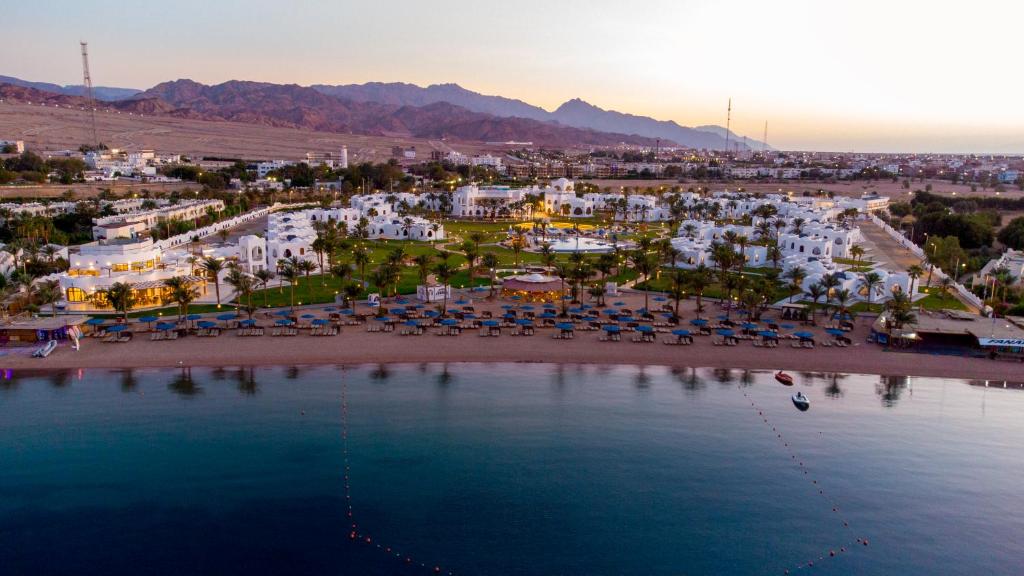
Lighthouse Reef, named after the nearby Lighthouse dive site, is a testament to nature’s artistry. Here, jagged formations of coral and rock give rise to an underwater landscape that’s both surreal and captivating. Snorkelers and divers alike are treated to a kaleidoscope of colors as they navigate through this submerged labyrinth.

In Dahab, time seems to stretch and contract in harmony with the ebb and flow of the sea. The days gently roll into one another, leaving behind memories of sun-kissed sands, vibrant coral gardens, and the embrace of a town that seems to breathe with the rhythms of nature. It’s a place where relaxation isn’t just an option; it’s a way of life. Dahab beckons, inviting you to step into its tranquil embrace and discover a world where time holds its breath.
2. Siwa Oasis: Where Time Stands Still in a Desert Paradise

Tucked away in the far reaches of Egypt’s Western Desert, Siwa Oasis emerges as a sanctuary of solitude amidst the vast expanse of arid landscapes. This remote haven, known as the “Island of the Blessed,” is an isolated paradise that has managed to preserve its ancient Berber traditions and serene way of life.

One of the most captivating aspects of Siwa Oasis lies in its unique cultural experiences. Here, visitors have the rare opportunity to immerse themselves in the rich heritage of the local Berber communities. These indigenous inhabitants, with their distinct language and customs, offer a glimpse into a world that has remained largely untouched by the rapid pace of modernity. The ancient mud-brick villages, with their labyrinthine alleyways, provide a living testament to a time when life was simpler, yet deeply meaningful.

Siwa Oasis is also renowned for its natural thermal springs, whose soothing waters are said to possess healing properties. These hot springs, surrounded by lush palm groves, invite visitors to submerge themselves in warm, mineral-rich pools, providing a rejuvenating experience for both body and soul. It’s a chance to let go of worldly worries and surrender to the healing embrace of nature.

For those seeking a deeper level of relaxation, Siwa offers a range of spa treatments that draw on ancient wellness practices. From invigorating massages using locally sourced herbs and oils to holistic therapies inspired by traditional Berber rituals, the spas in Siwa provide a transcendent experience that harmonizes mind, body, and spirit.

As night descends upon Siwa, a celestial spectacle unfolds overhead. The oasis, far from the glare of urban lights, offers an unrivaled opportunity for stargazing. The velvety desert sky becomes a canvas of twinkling constellations, inviting contemplation and wonder. The silence that envelops the oasis amplifies the cosmic symphony, creating a profound sense of connection to the universe.
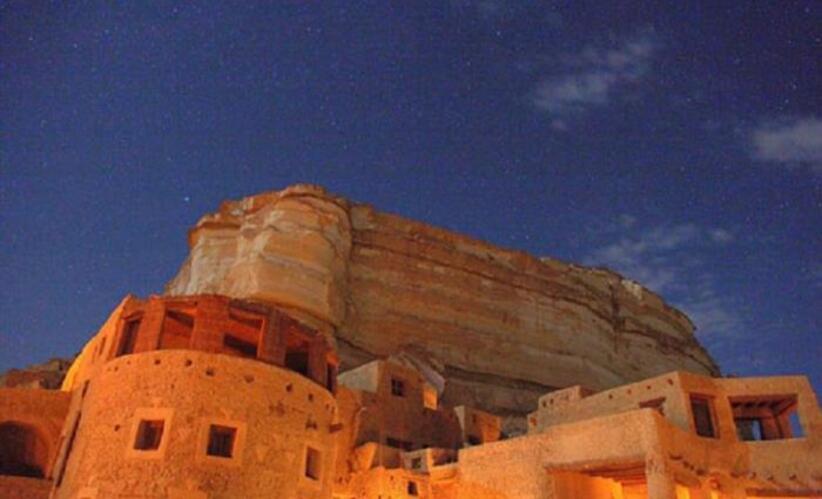
Among the notable attractions in Siwa is the Temple of the Oracle, an ancient sanctuary dedicated to the god Amun. This sacred site, perched atop a hill overlooking the oasis, once drew seekers of wisdom and guidance from across the ancient world. Its ancient stones still echo with the whispers of a time long past, adding an air of mystique to this already enchanting locale.

Another gem within the oasis is Cleopatra’s Pool, a tranquil natural spring believed to have been frequented by the famed Egyptian queen herself. Surrounded by date palms and framed by the desert’s golden sands, the pool is a place of serene beauty and historical significance.

In Siwa Oasis, time takes on a different cadence, guided by the rhythms of nature and the echoes of ancient civilizations. It’s a place where the modern world fades into the background, leaving behind a canvas of undisturbed tranquility. Siwa invites you to step into its timeless embrace and discover a paradise that transcends the boundaries of time and space.
3..Aswan: Where the Nile’s Serenity Beckons
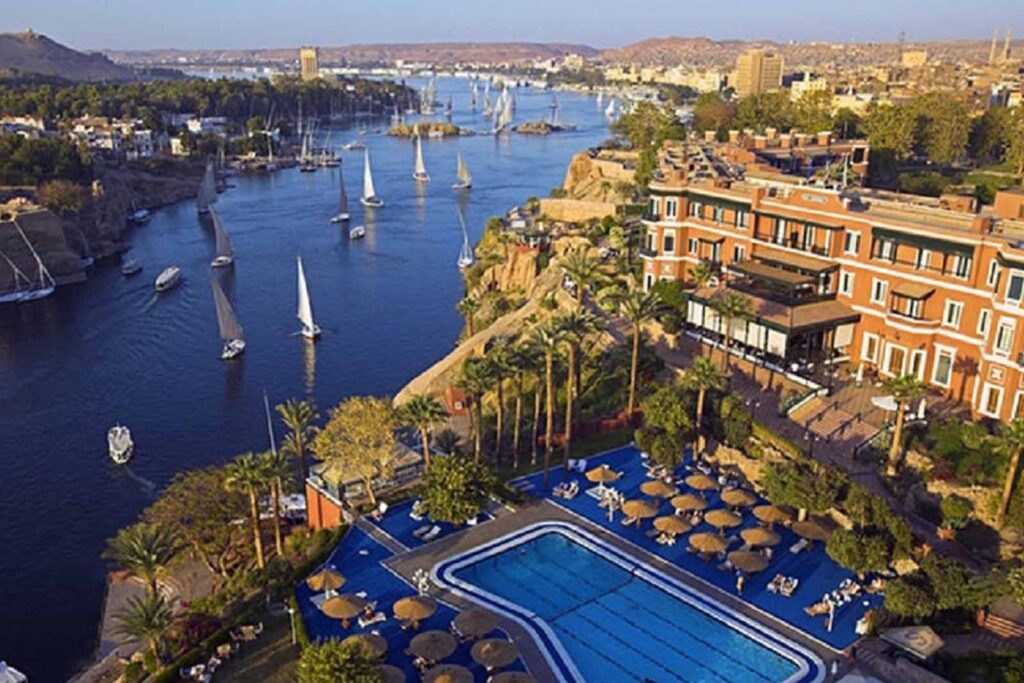
Nestled along the banks of the mighty Nile, Aswan emerges as a serene oasis, far removed from the frenetic energy of bustling metropolises like Cairo or the historical whirlwind of Luxor. This southernmost city of Egypt is a testament to the country’s rich cultural tapestry, where the pace of life is akin to the languid flow of the very river it sits beside.

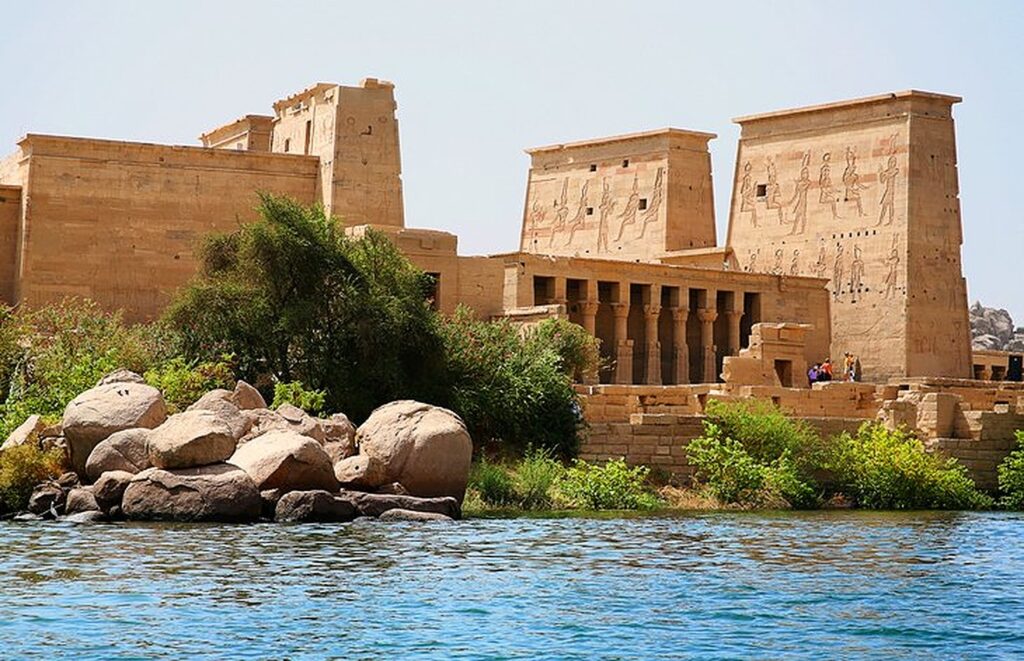
Life in Aswan moves to its own rhythm, one marked by a gentle cadence that allows visitors to catch their breath and soak in the ambiance. The locals here are known for their warm hospitality, taking pride in sharing their city’s treasures with those who venture into its embrace. In Aswan, there’s a sense of timelessness that permeates the air, as if the river itself imparts a wisdom that transcends the ages.
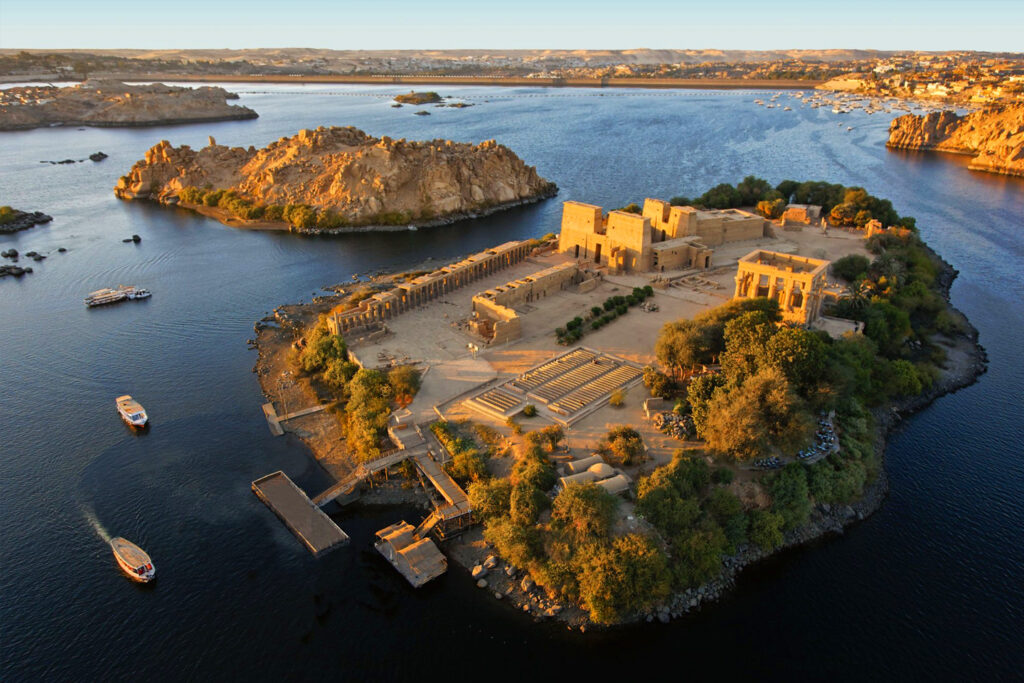
One of the quintessential experiences in Aswan is a felucca boat ride along the Nile’s languorous waters. These traditional wooden sailboats, their white sails billowing in the breeze, offer a leisurely voyage through scenes that seem frozen in time. The timeless beauty of the Nile’s banks, with their palm-fringed shores and Nubian villages, unfolds around every bend, creating a tableau of tranquil magnificence.
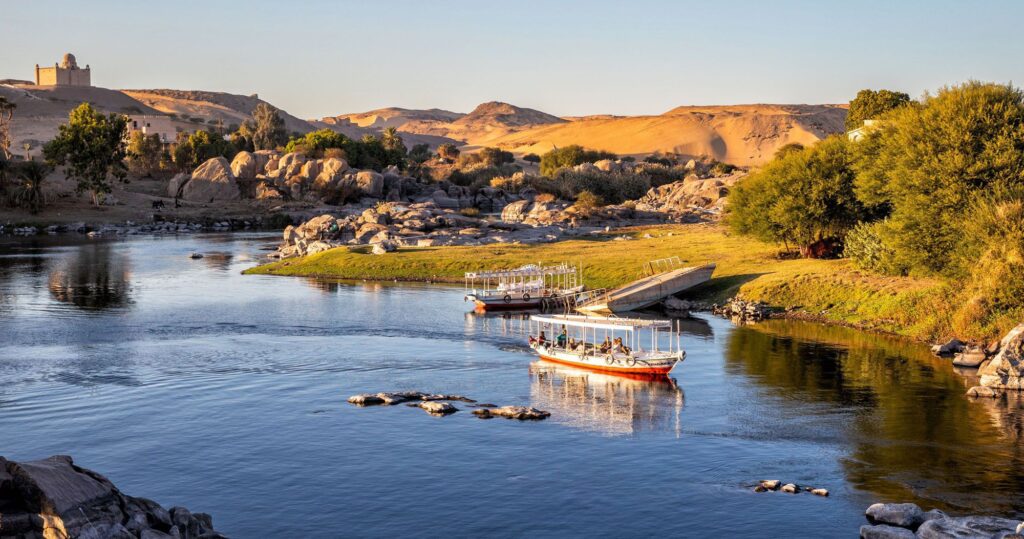
Exploring Elephantine Island is another gem in Aswan’s crown. This storied island, named for its ancient worship of the elephant-headed god Khnum, is steeped in history and mystique. Ruins of temples and fortresses whisper tales of a bygone era, while the modern Nubian villages dotted across the island provide a vibrant window into the living culture of this ancient land.
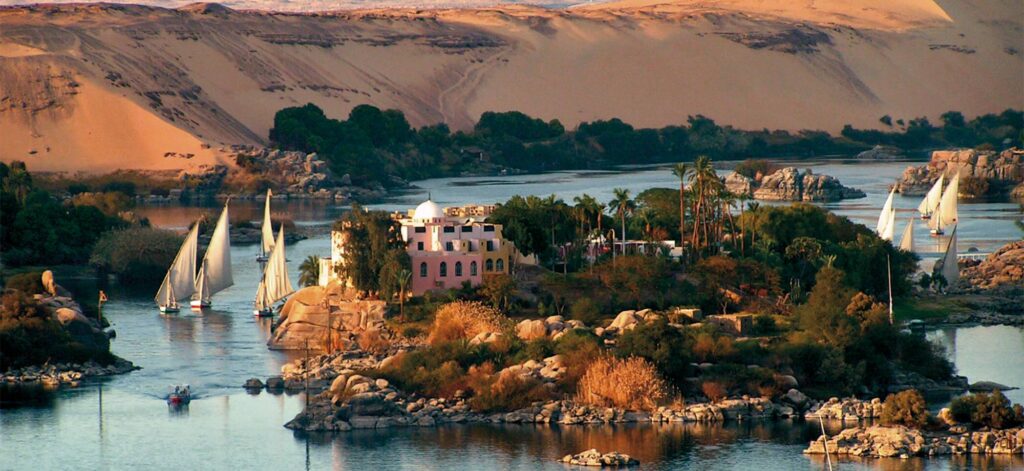
Aswan boasts a trio of attractions that stand as monuments to human ingenuity and the enduring power of the Nile. The Philae Temple, dedicated to the goddess Isis, is a testament to the ancient Egyptians’ architectural prowess. Moved stone by stone to its current location on Agilkia Island, it remains a sanctuary of both spiritual and artistic significance.
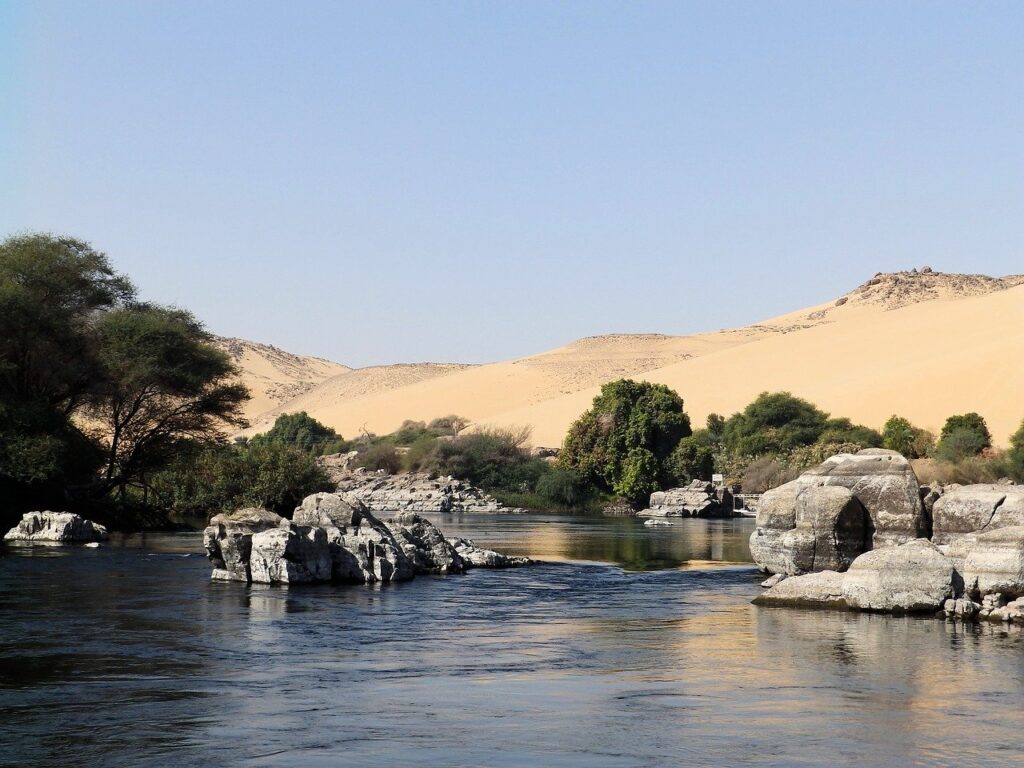
The High Dam, a marvel of modern engineering, stands as a sentinel over the Nile, taming its waters and providing invaluable resources to Egypt. This feat of human endeavor not only controls the river’s flow but also houses the fascinating Nubian Museum, which chronicles the history and culture of the Nubian people.

A short distance from the High Dam lies the Unfinished Obelisk, an awe-inspiring testament to the ambitious undertakings of the ancient Egyptians. Carved from solid granite, this mammoth structure remains embedded in the bedrock, offering a glimpse into the colossal efforts required to create such monumental pieces of history.
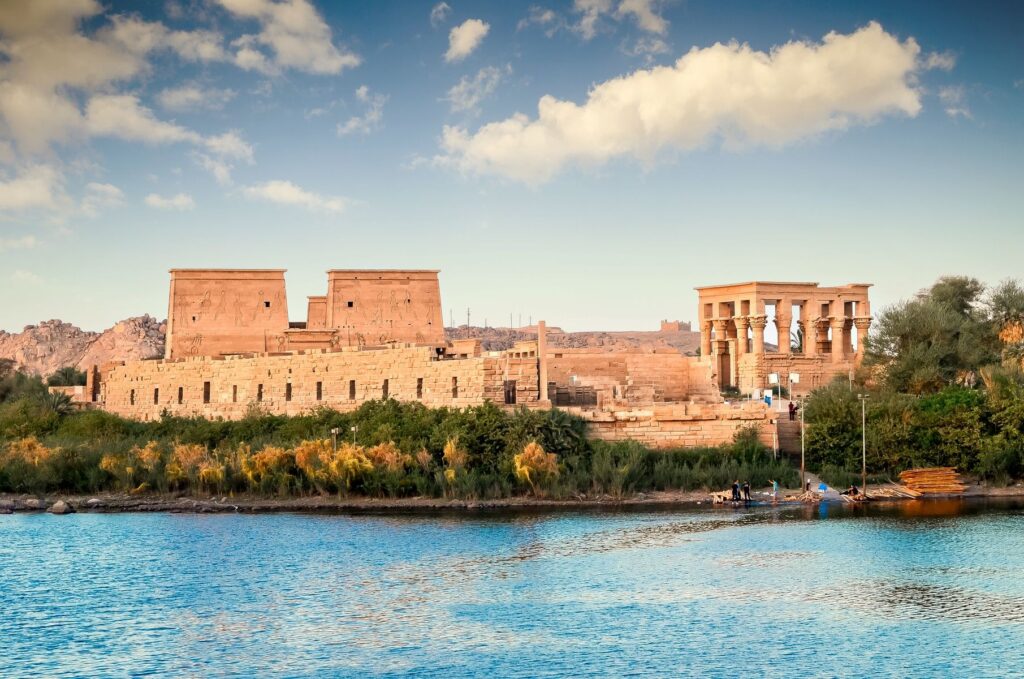
Aswan, with its unhurried pace and profound connection to the Nile, is a place where time seems to stretch and breathe. It’s a city where the ancient and the modern coexist harmoniously, where the vibrant colors of daily life blend seamlessly with the golden hues of antiquity. To visit Aswan is to step into a world where the river’s serenity washes over you, leaving behind an indelible sense of peace and wonder.
4. Nuweiba: A Hidden Gem on the Red Sea’s Shore
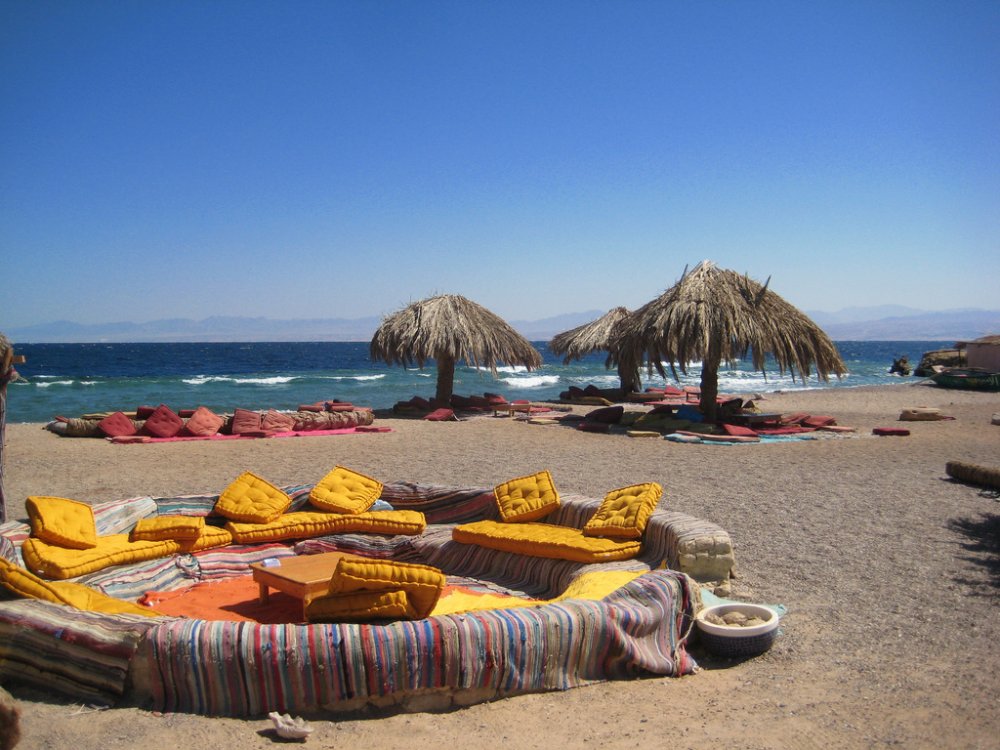
Nestled along the eastern coast of the Sinai Peninsula, Nuweiba stands as an undiscovered treasure along the shores of the Red Sea. Unlike its more frequented counterparts, Nuweiba has managed to preserve its unspoiled natural beauty and tranquil ambiance, making it a haven for those seeking a respite from the bustle of modern life.
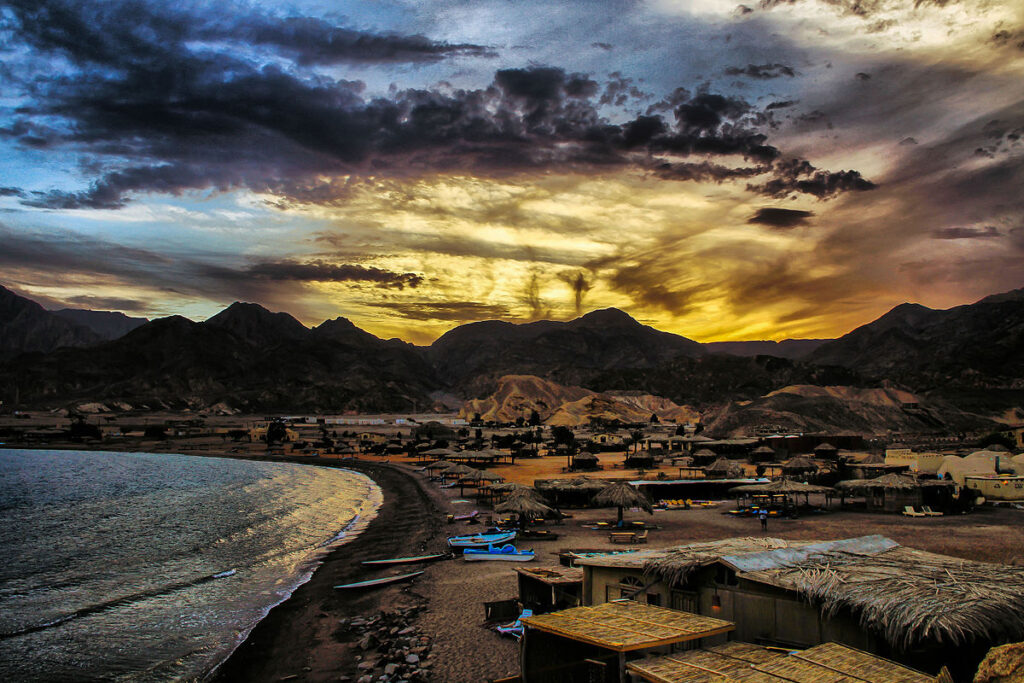
The beaches of Nuweiba are nothing short of a sanctuary for the soul. Here, the sands are powdery and pristine, stretching out along the coastline in a tranquil embrace. The waters of the Red Sea, with their crystalline clarity, lap gently against the shore, inviting visitors to wade in and revel in the serenity of nature’s aquatic masterpiece.

The activities in Nuweiba cater to both the seeker of adventure and the aficionado of tranquility. Beachcombing along the shoreline yields a treasure trove of seashells and polished stones, each a testament to the sea’s artistic hand. Snorkeling enthusiasts will find a vibrant underwater world teeming with exotic marine life, its colors and patterns an awe-inspiring display of nature’s creativity.
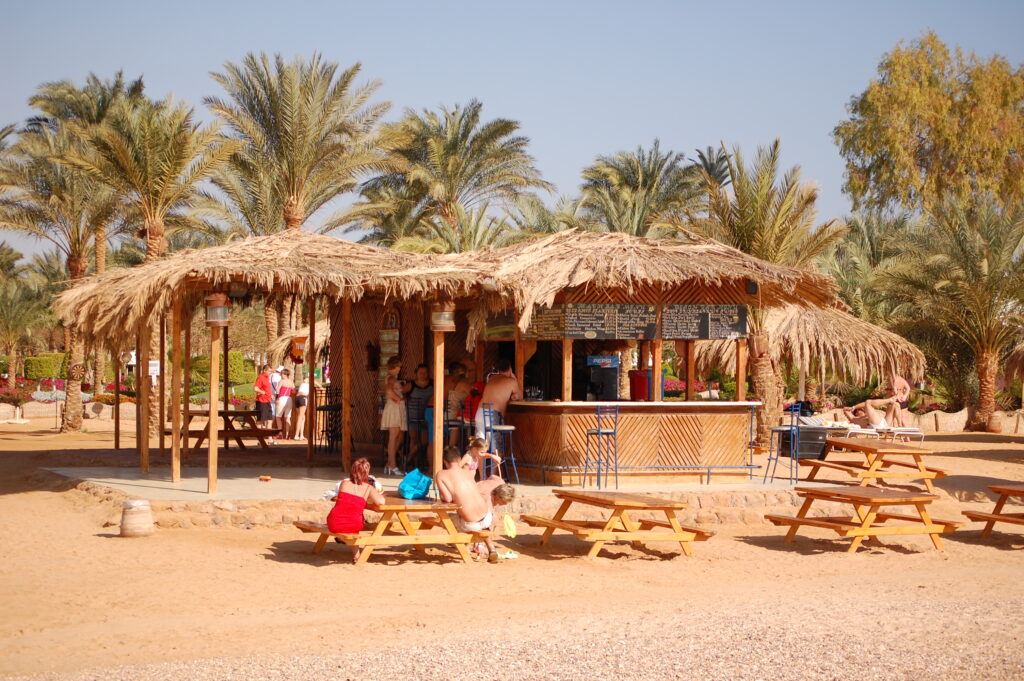
For those inclined to explore the rugged beauty of the Sinai Peninsula, Nuweiba offers an array of hiking opportunities. The nearby mountains, with their sinuous trails and panoramic vistas, beckon adventurers to venture forth and immerse themselves in the grandeur of the desert landscape. As the sun sets over the mountains, casting long, captivating shadows, the sense of connection to nature is palpable.
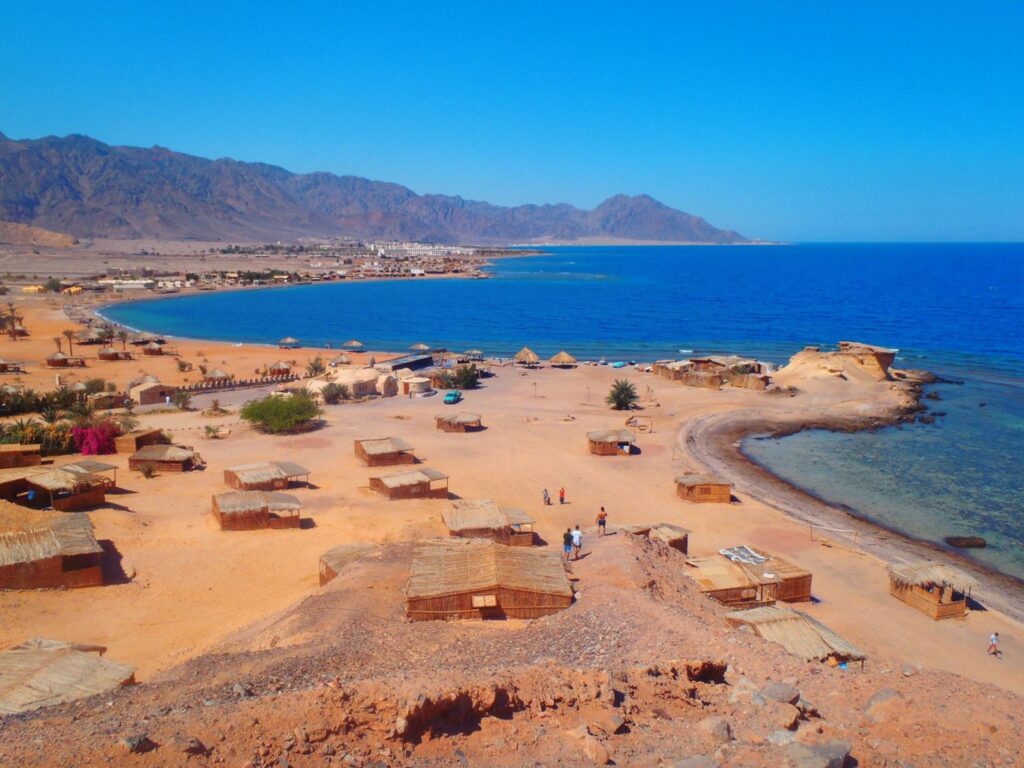
Among the notable attractions in Nuweiba is the Colored Canyon, a geological marvel of swirling hues and dramatic rock formations. The canyon, etched by the patient hand of time, offers a labyrinthine journey through walls of kaleidoscopic stone. As sunlight filters through the narrow passages, the rocks come alive with a mesmerizing dance of color and light, creating an almost otherworldly experience.
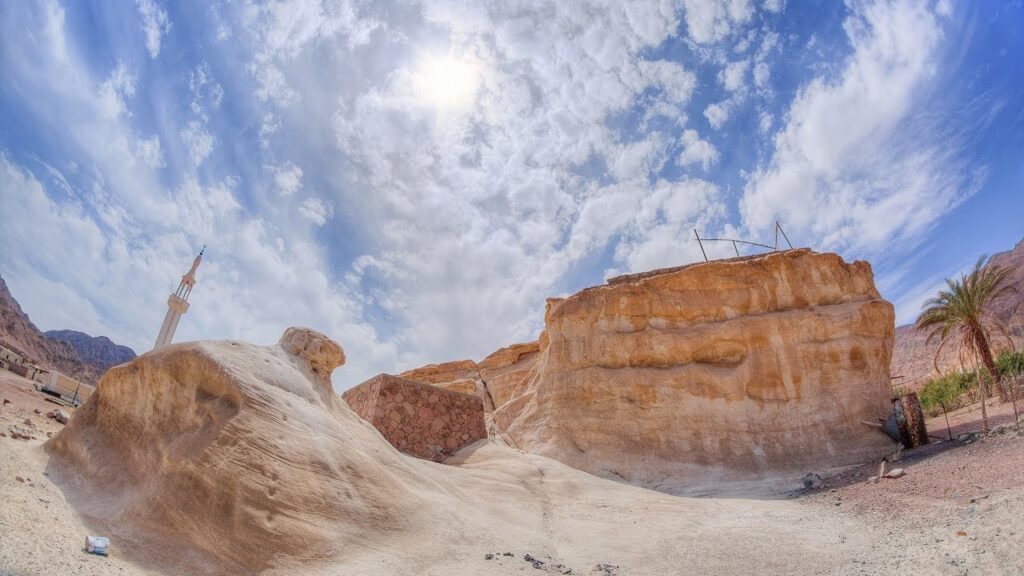
Ain Khudra Oasis, nestled in the embrace of the desert, is another jewel in Nuweiba’s crown. This verdant oasis, fed by a natural spring, offers a stark contrast to the surrounding arid landscape. Here, palm trees sway in the breeze, providing a cool respite for weary travelers. The oasis is a testament to nature’s ability to thrive in even the most challenging environments.
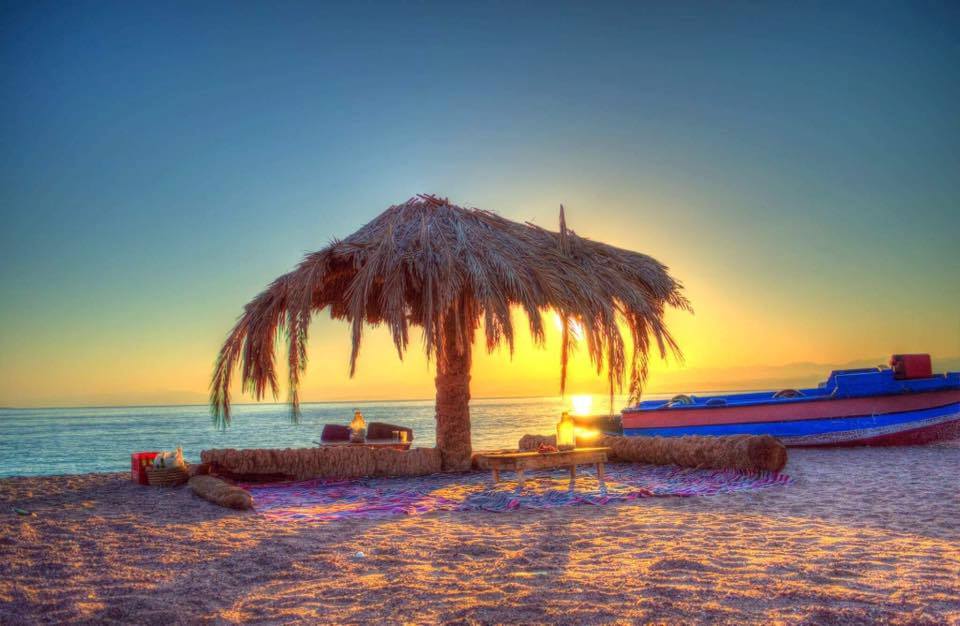
Nuweiba, with its peaceful beaches, rugged mountains, and hidden natural wonders, remains a testament to the Red Sea’s boundless beauty. It’s a place where time seems to stand still, where the rhythms of nature hold sway, and where the soul finds solace in the embrace of the land and sea. Nuweiba invites you to uncover its hidden treasures and discover a world where serenity reigns supreme.
5. Fayoum Oasis: A Tranquil Retreat Near Cairo
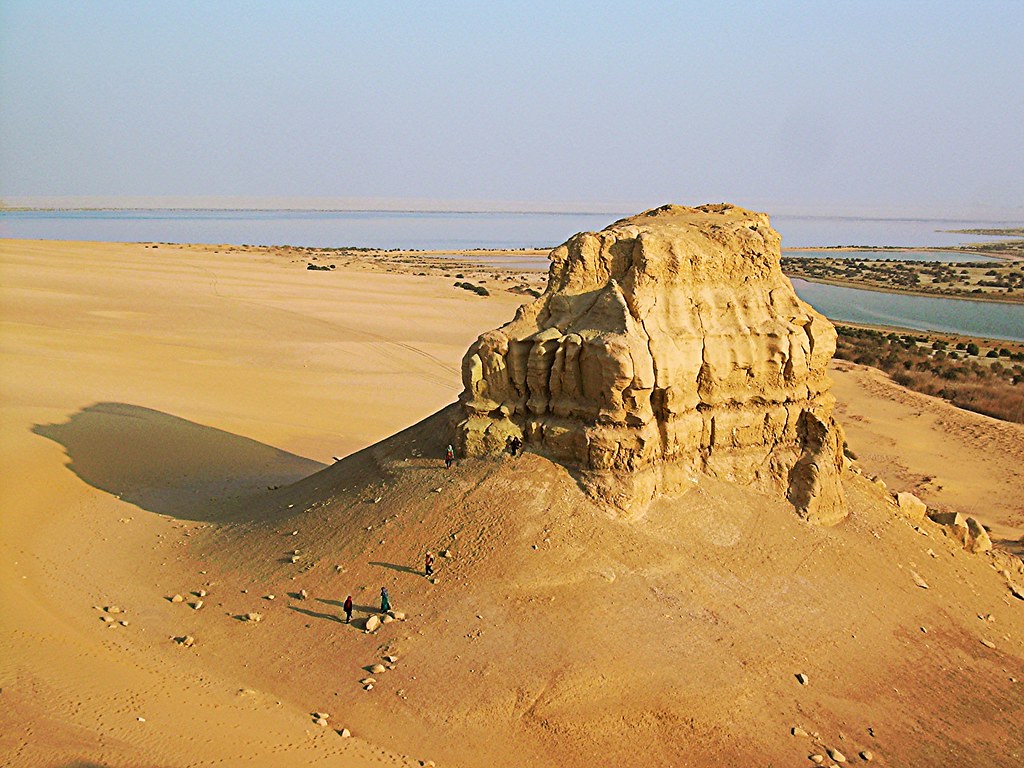
Just a short distance from the bustling energy of Cairo lies Fayoum Oasis, a hidden gem that offers a peaceful respite from the urban hustle and bustle. Nestled in the heart of the Western Desert, Fayoum is a tranquil haven that beckons travelers with its serene landscapes, cultural richness, and a sense of timelessness that permeates the air.

One of the most enchanting aspects of Fayoum is its ability to offer relaxation through a variety of activities set against its diverse natural backdrop. Birdwatching at Lake Qarun, the largest saltwater lake in Egypt, is a therapeutic experience that immerses visitors in the sights and sounds of nature. The lake serves as a migratory hub for countless bird species, making it a haven for ornithologists and nature enthusiasts alike. As the sun casts its golden glow upon the water, the dance of wings and the calls of birds create a symphony of tranquility.

For the more adventurous spirits, the towering sand dunes of Fayoum’s desert offer an exhilarating playground for sandboarding. Gliding down the slopes of fine golden sand, with the desert expanse stretching out to the horizon, provides an adrenaline rush like no other. The stark beauty of the desert, with its undulating dunes and vast openness, creates an awe-inspiring backdrop for this thrilling activity.
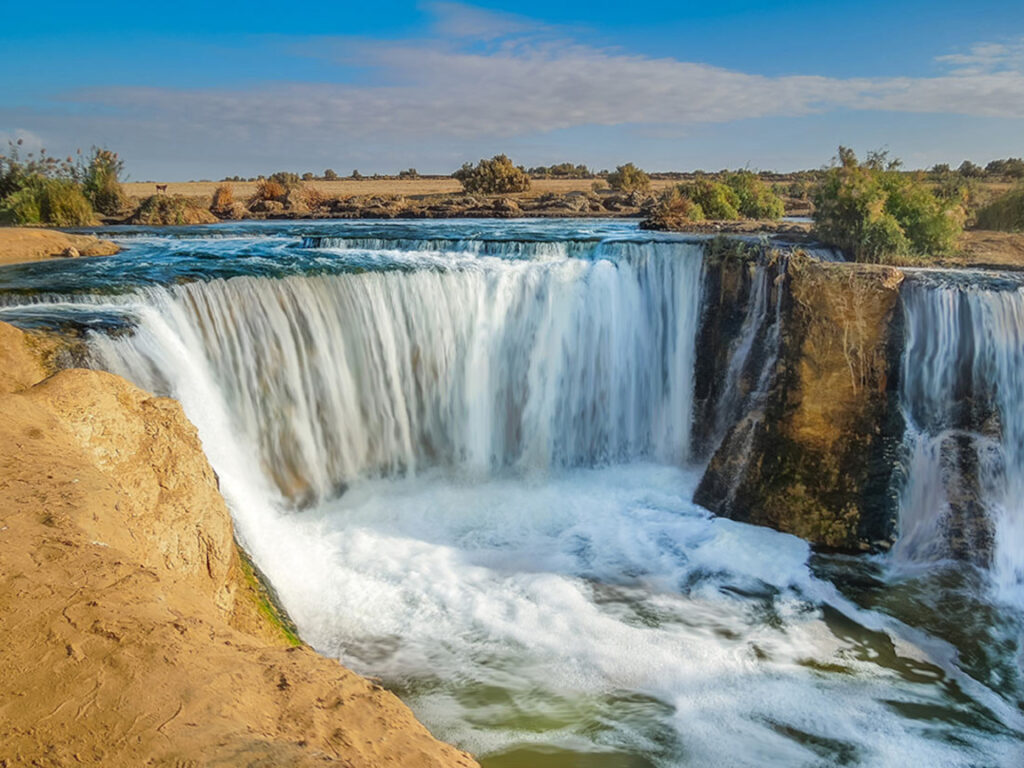
Fayoum is also a haven for those seeking to immerse themselves in Egypt’s rich cultural tapestry. Local pottery workshops offer a window into an ancient craft that has been practiced in this region for centuries. Skilled artisans mold clay into intricate forms, creating pottery that reflects the deep connection between the people of Fayoum and their land. Visitors have the opportunity not only to observe these craftsmen at work but also to try their hand at shaping the clay and leaving their own mark on this timeless art form.
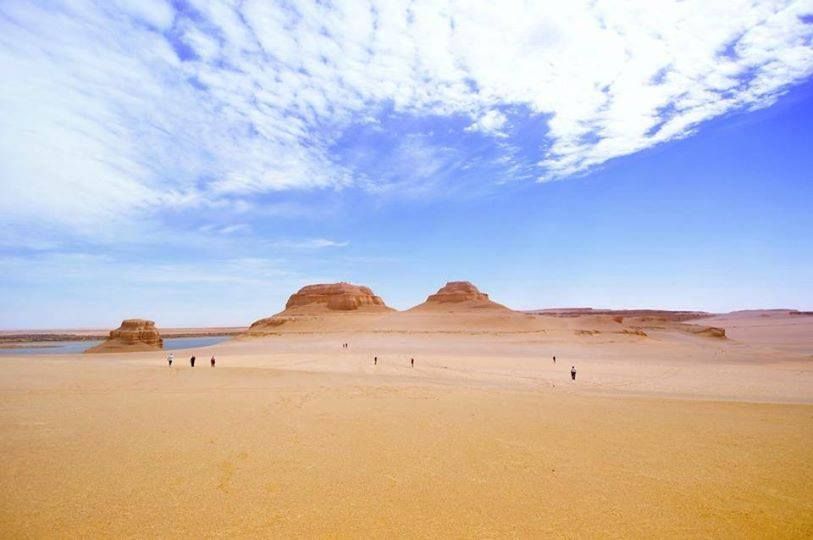
Exploring the ancient ruins that dot Fayoum’s landscape is a journey back in time. The remnants of temples, palaces, and settlements bear witness to the region’s storied past. The city of Karanis, with its well-preserved archaeological site, offers a glimpse into the daily life of an ancient Greco-Roman city. The ruins reveal intricate mosaics, grand courtyards, and even remnants of a library, painting a vivid picture of a once-thriving community.
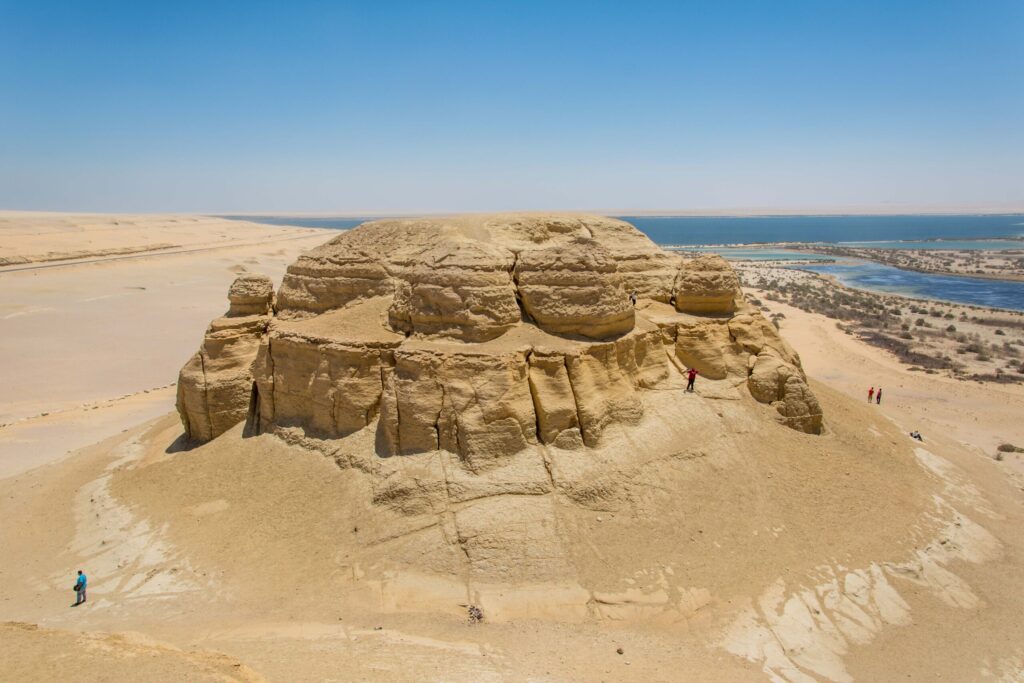
Among Fayoum’s most awe-inspiring attractions is Wadi El Hitan, or Whale Valley, a UNESCO World Heritage Site. This prehistoric marvel, nestled within the desert expanse, holds fossils of ancient marine life, including the skeletal remains of early whales. The site provides a tangible link to the distant past, offering a window into the evolution of life on Earth.
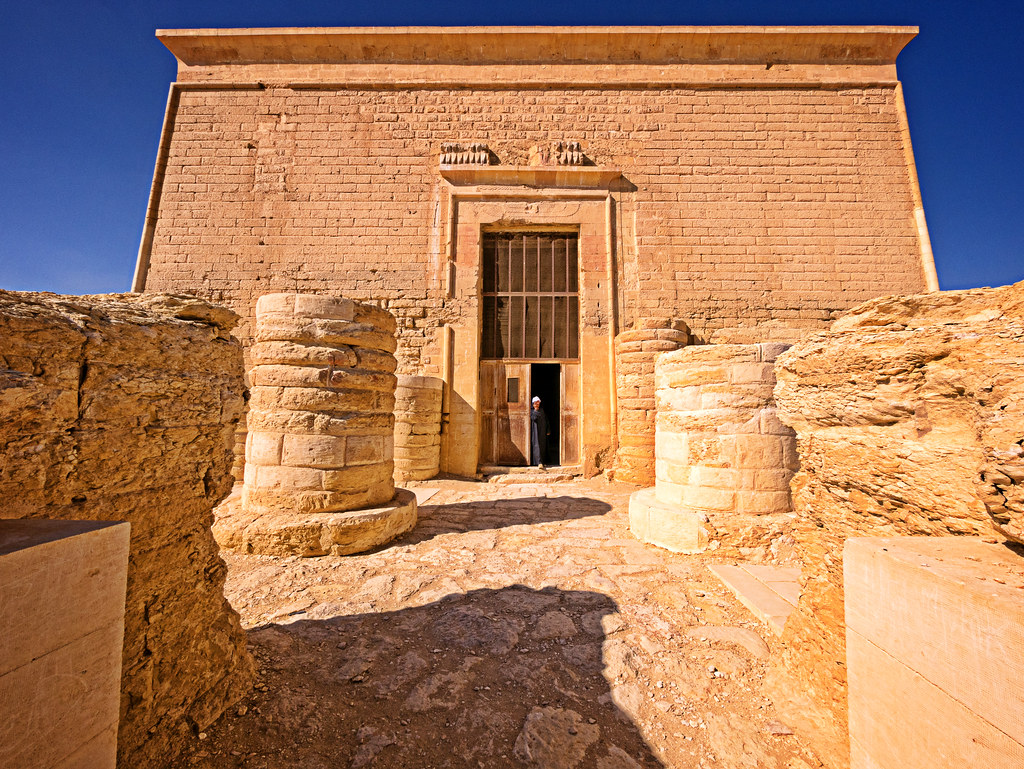
Qasr Qarun, an ancient Coptic monastery, stands as a testament to the spiritual legacy of Fayoum. This well-preserved complex, with its graceful arches and peaceful courtyards, emanates a sense of serenity that transcends time. It’s a place where the echoes of devotion still resonate, inviting visitors to pause and reflect.
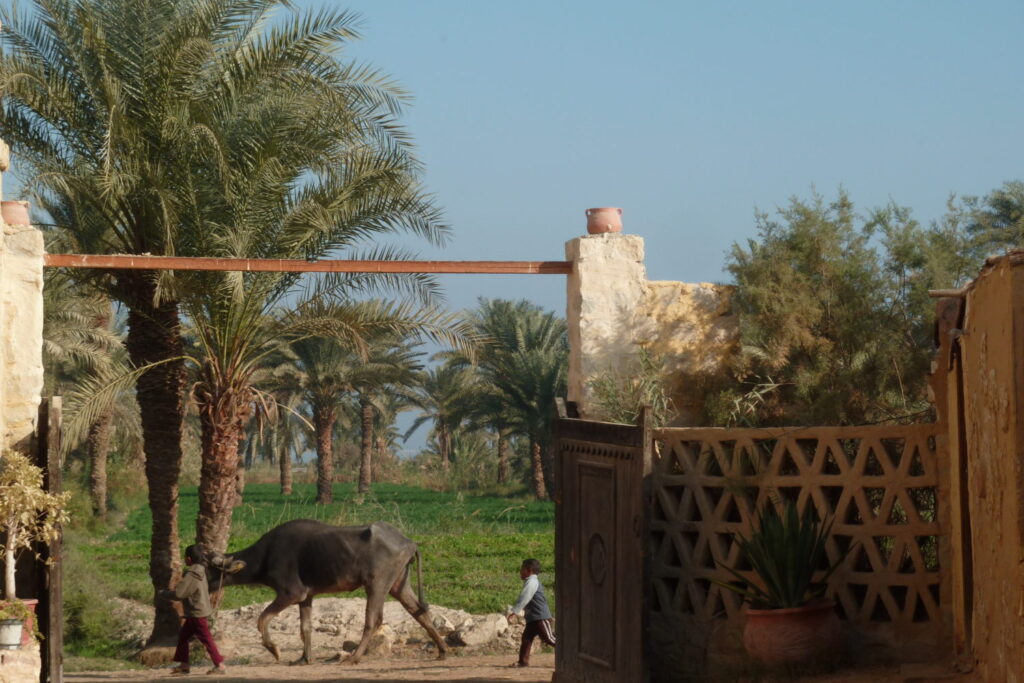
Fayoum Oasis, with its harmonious blend of natural beauty, cultural heritage, and ancient wonders, stands as a testament to the enduring spirit of Egypt. It’s a place where time seems to slow, where the past and present converge, and where the soul finds solace in the embrace of the land. Fayoum invites you to embark on a journey of discovery, where tranquility and wonder await around every corner.
6.Marsa Matrouh: Mediterranean Tranquility Beckons
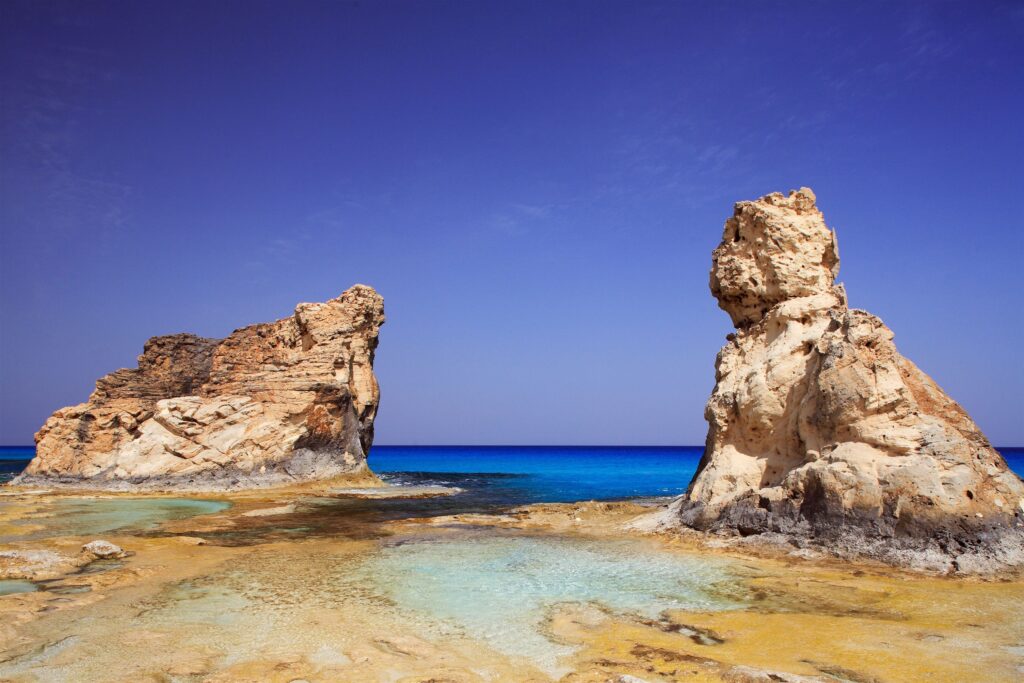
Tucked away on the pristine shores of the Mediterranean, Marsa Matrouh emerges as a coastal gem that invites travelers to bask in the beauty of Egypt’s northern coast. Far from the bustling urban centers, this tranquil haven offers an escape to a world where azure waters meet golden sands, and time seems to stretch languorously with the gentle rhythm of the sea.
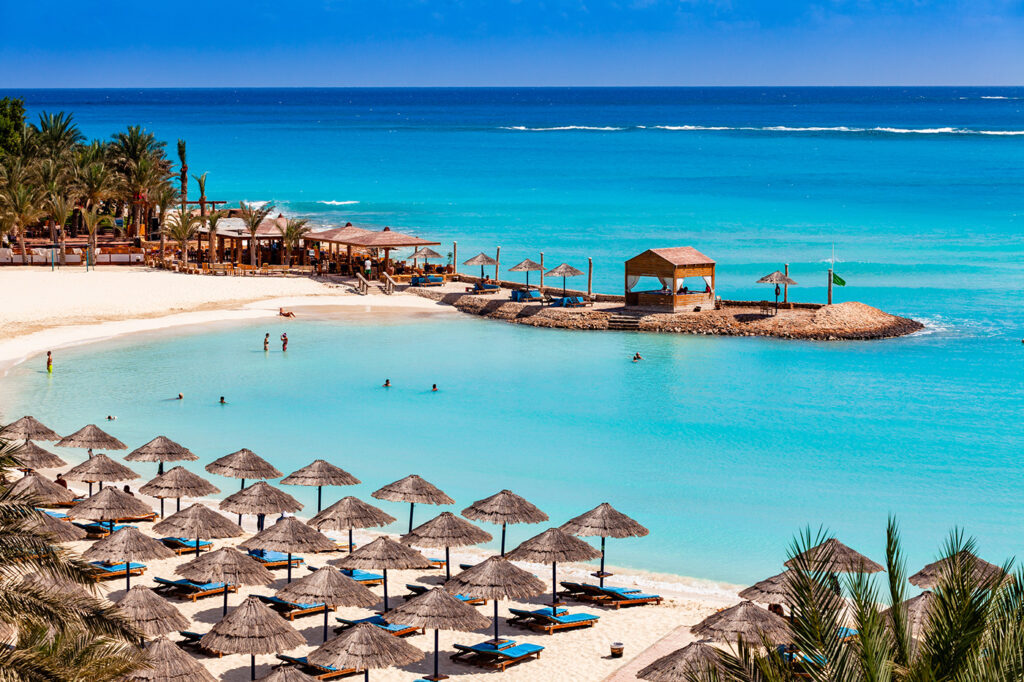
The beaches of Marsa Matrouh are nothing short of a Mediterranean paradise. Stretching along the coast, the sands here are soft, powdery gold, inviting visitors to kick off their shoes and feel the warmth beneath their feet. The Mediterranean waters, with their crystalline clarity, shimmer in shades of blue that seem almost too vivid to be real. The gentle waves lap against the shore, creating a soothing soundtrack that accompanies moments of pure relaxation.

The activities in Marsa Matrouh cater to both those seeking serenity and those in search of adventure. The clear, inviting waters are a playground for swimmers, offering a refreshing respite from the warmth of the sun. Sunbathing on the beach, with the scent of salt in the air and the sound of the waves in the background, is an experience that allows visitors to fully immerse themselves in the coastal ambiance.
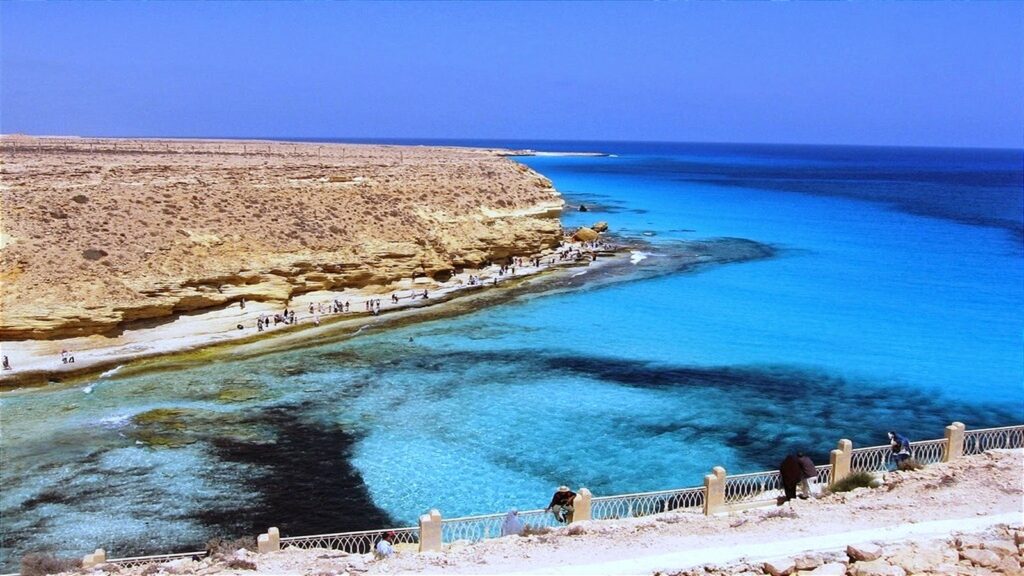
For history enthusiasts, Marsa Matrouh holds a unique allure. The region was a significant strategic point during World War II, and remnants of that era still echo through the landscape. Exploring WWII sites, such as bunkers and fortifications, provides a fascinating glimpse into the military history of the area. The juxtaposition of these historic sites against the backdrop of the serene Mediterranean adds a layer of intrigue to the coastal experience.
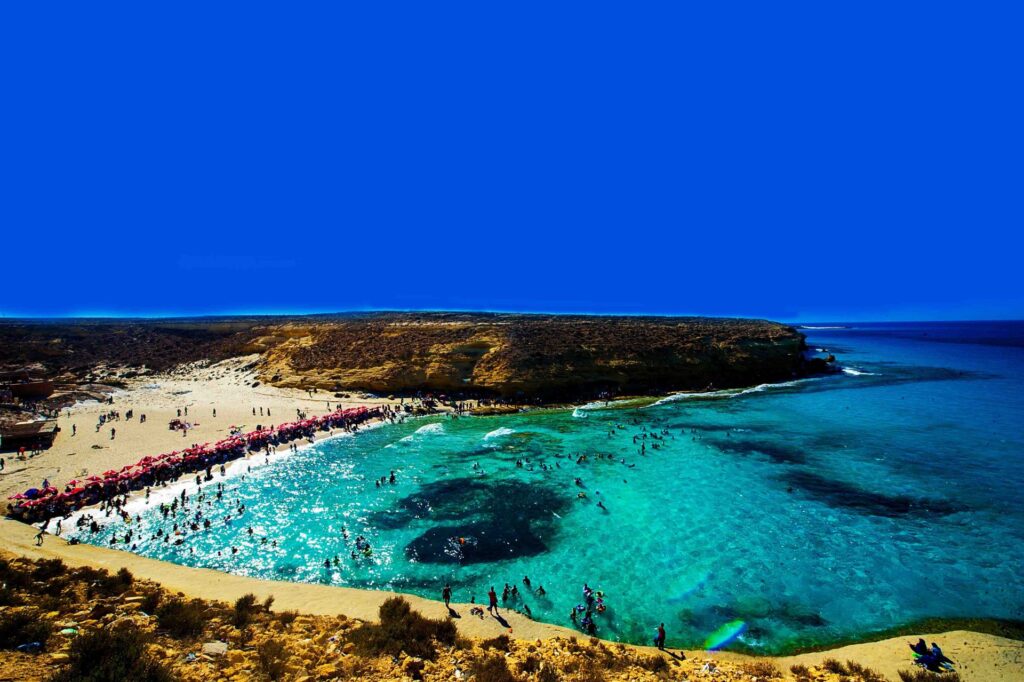
Among the notable attractions in Marsa Matrouh is Agiba Beach, a natural wonder that lives up to its name, which means “miracle” in Arabic. Perched atop cliffs that overlook the sea, Agiba Beach offers a breathtaking panorama of the Mediterranean. The beach itself is a pristine cove, accessible by a winding path that leads down to the shore. It’s a place where the beauty of nature unfolds in all its unspoiled splendor.
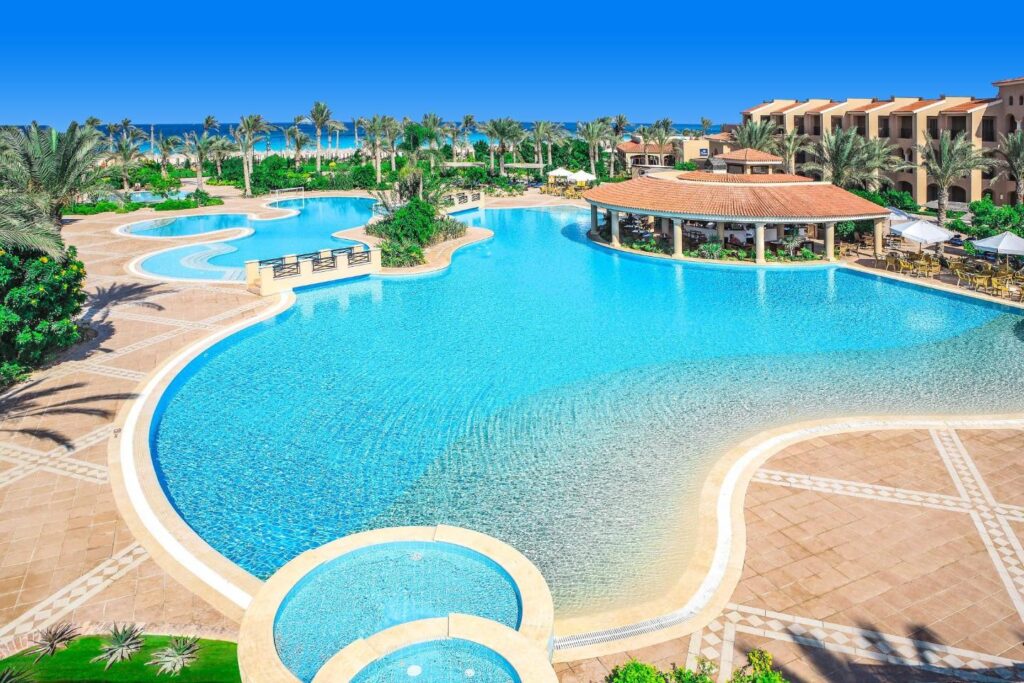
Rommel’s Hideout, named after the famed German general who utilized the area during WWII, is another intriguing site in Marsa Matrouh. This coastal cave, carved by the ceaseless embrace of the sea, serves as a poignant reminder of the region’s historical significance. The cave’s chambers, with their rough-hewn walls and echoing silence, offer a sense of timelessness that transcends the decades.
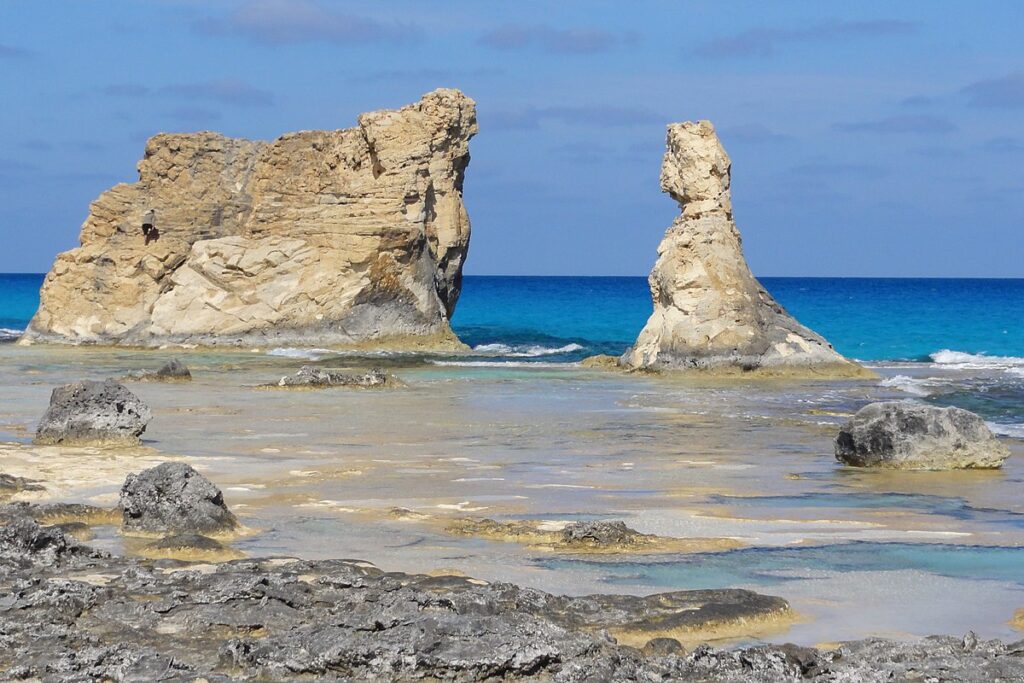
In Marsa Matrouh, the Mediterranean’s timeless allure mingles with the echoes of history, creating an ambiance that is both tranquil and captivating. It’s a place where the simple pleasures of sun, sea, and sand come together with the remnants of a storied past. Marsa Matrouh extends an invitation to discover a coastal haven where relaxation and wonder converge in perfect harmony.
7. Luxor’s West Bank: Where Ancient Echoes Meet Tranquility
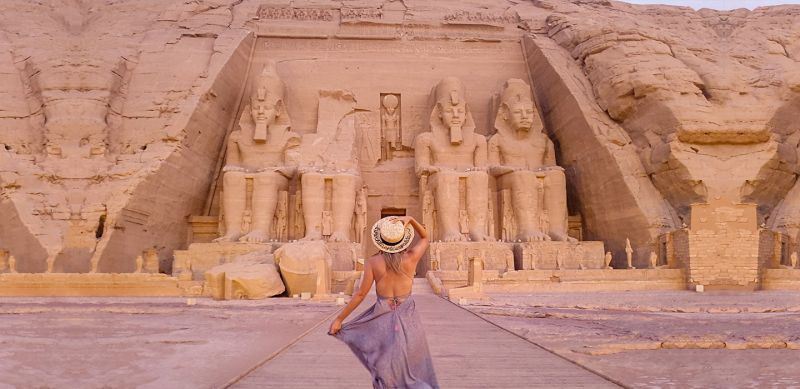
While Luxor’s East Bank pulsates with the vibrant energy of modern life and the awe-inspiring grandeur of Luxor and Karnak Temples, its West Bank offers a quieter, more introspective encounter with Egypt’s ancient past. Here, the Nile’s gentle embrace cradles a landscape steeped in history, where the whispers of pharaohs and artisans echo through the ages.
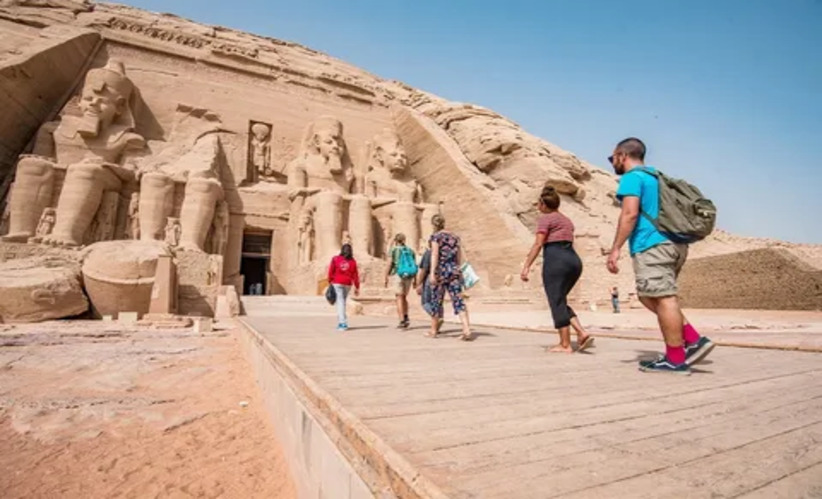
The West Bank of Luxor, separated from its bustling counterpart by the timeless flow of the Nile, provides a peaceful counterbalance to the vibrant activity across the river. Here, the pace of life slows, and the ambiance embraces a sense of tranquility that allows visitors to immerse themselves in the profound antiquity of the region.
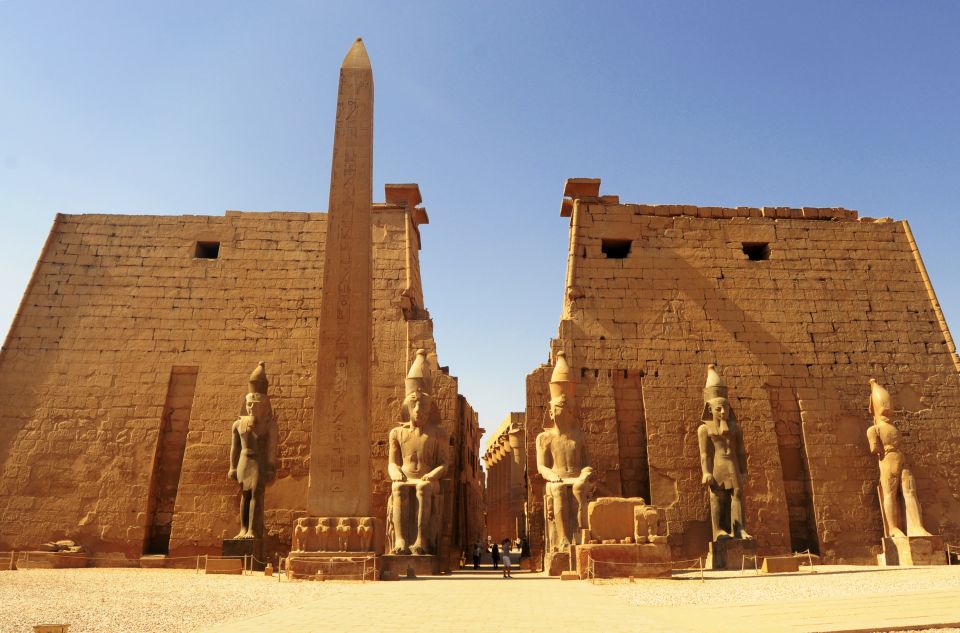
One of the most noticeable distinctions of Luxor’s West Bank is the absence of the crowds that often characterize the East Bank’s popular attractions. While sites like Luxor Temple and the bustling marketplaces offer their own enchantments, the West Bank invites a more intimate communion with the ancient world. The quieter atmosphere creates an environment where contemplation and exploration unfold at a leisurely pace.
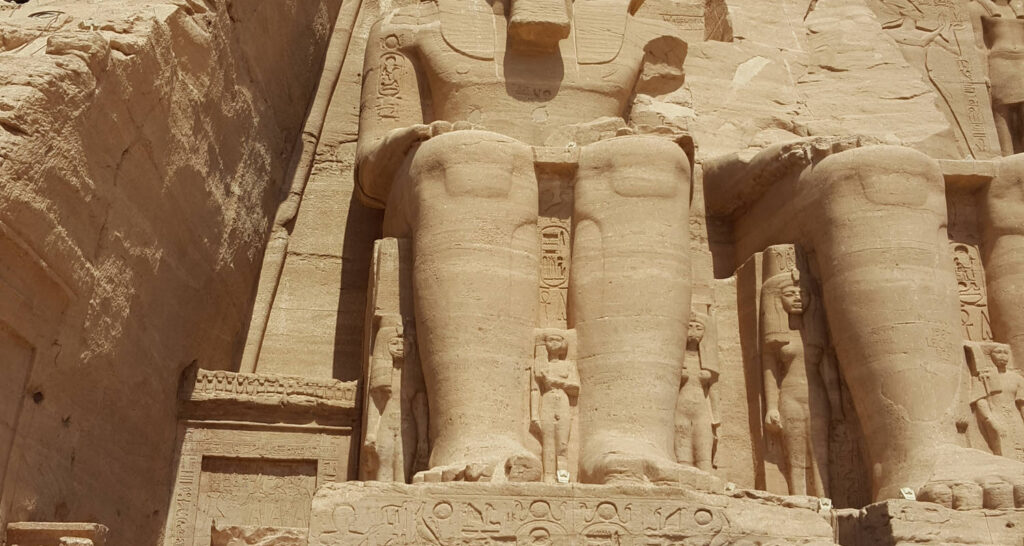
Exploring the ancient tombs that dot the Valley of the Kings is an experience that transcends time. Carved into the cliffs, these subterranean chambers were intended to be eternal resting places for pharaohs and nobility. Each tomb is a testament to the meticulous craftsmanship and spiritual beliefs of ancient Egypt. The vividly painted walls and elaborate hieroglyphics serve as a vivid tableau of a civilization’s journey through life and into the afterlife.
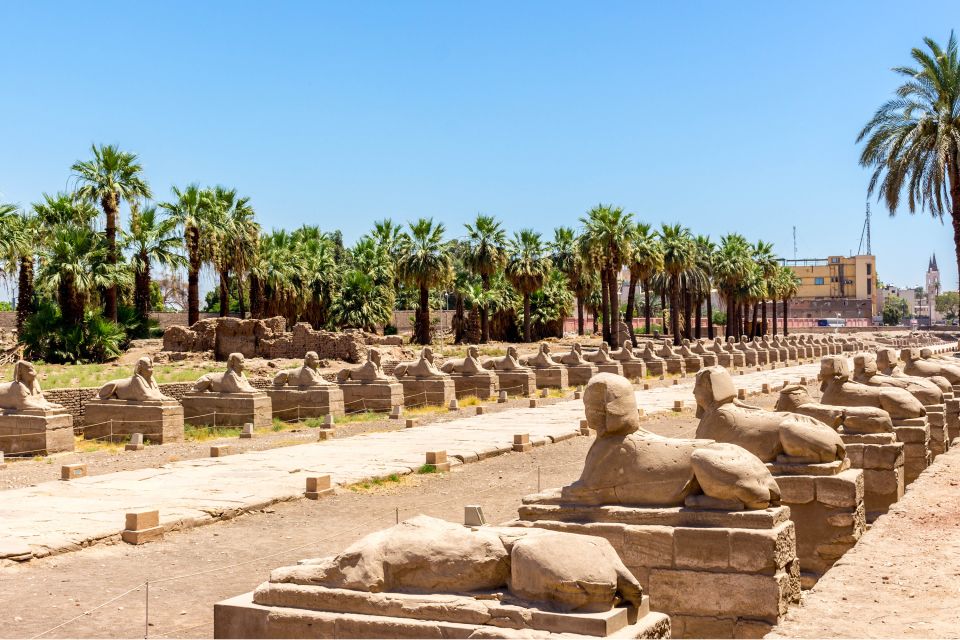
Beyond the Valley of the Kings, the West Bank offers the opportunity to visit local villages that have preserved their ancient traditions. Here, the rhythms of daily life continue much as they have for generations. The hospitality of the villagers is genuine and warm, inviting visitors to partake in a slice of authentic Egyptian life. Strolling through the narrow alleyways and interacting with the locals provides a unique window into the living heritage of the region.
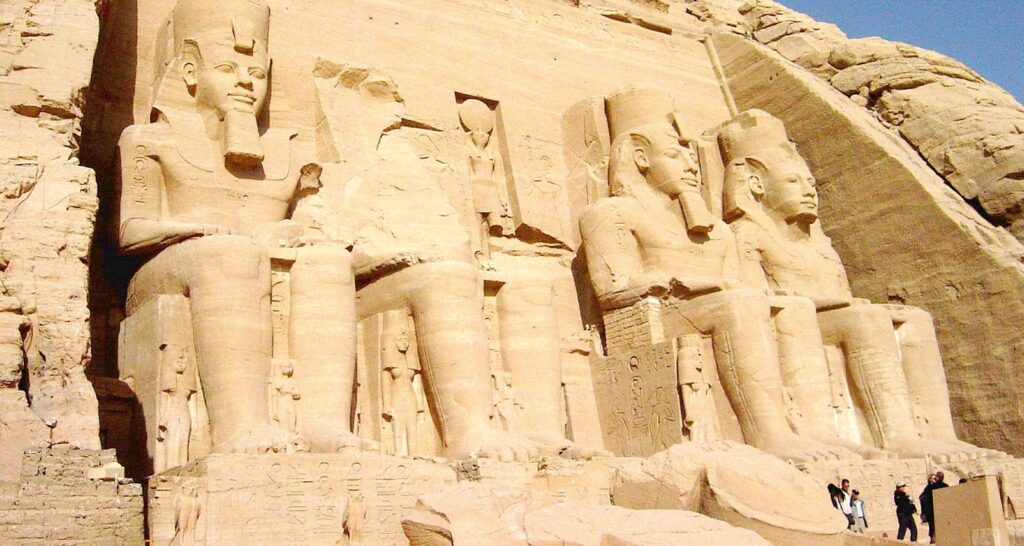
Among the notable attractions of Luxor’s West Bank is Medinet Habu, a sprawling complex that served as the mortuary temple of Ramses III. This grand structure, with its towering walls and intricate reliefs, stands as a testament to the pharaoh’s reign and his dedication to the gods. The vast courtyard and well-preserved chambers offer a glimpse into the religious and architectural achievements of ancient Egypt.
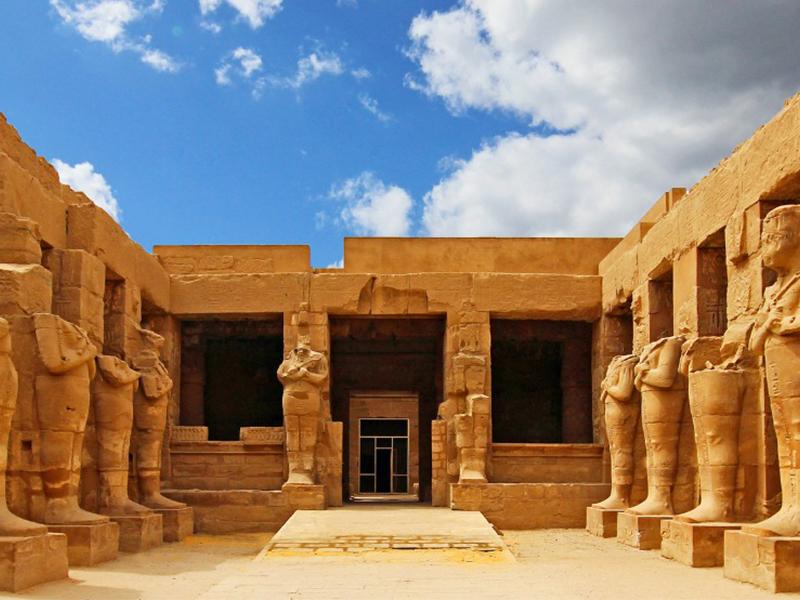
Deir el-Medina, a village nestled within a rocky enclosure, provides a fascinating insight into the lives of the artisans and workers who built the tombs of the pharaohs. This community, dedicated to the construction of the Valley of the Kings, boasts remarkably preserved houses, workshops, and even a small temple. The remnants of daily life, from personal belongings to graffiti on the walls, humanize the historical narrative, allowing visitors to connect on a personal level with the craftsmen of antiquity.
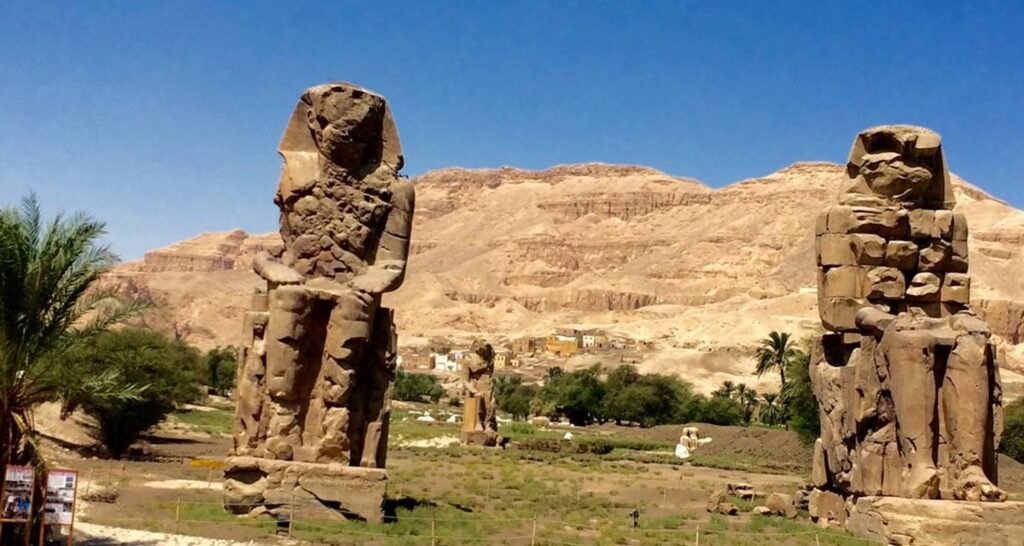
Luxor’s West Bank, with its timeless landscape and echoes of a distant past, invites contemplation and discovery. It’s a place where the layers of history unfold, revealing the intricate tapestry of an ancient civilization. In this tranquil counterpart to the East Bank’s vibrant energy, the legacy of pharaohs and artisans still lingers, waiting to be explored by those who seek to unearth the treasures of Luxor’s West Bank.
Conclusion
Discovering Egypt’s Serene Havens
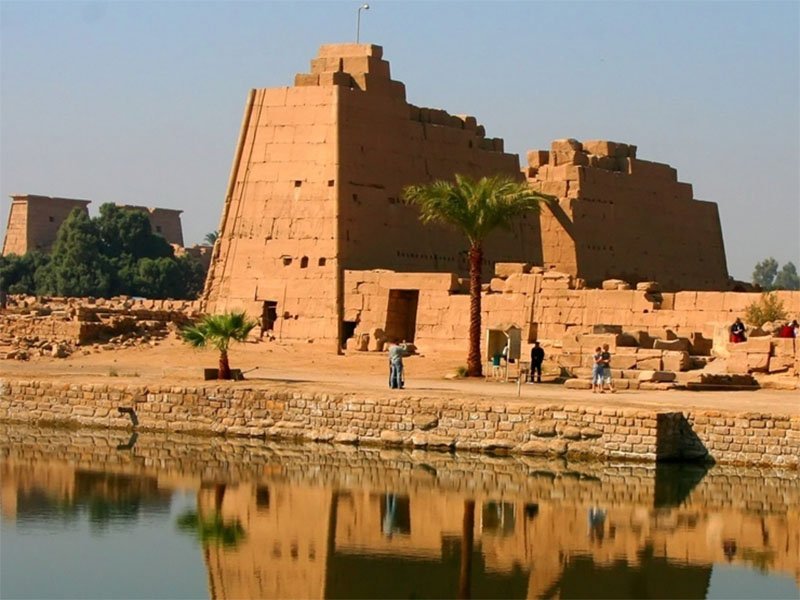
As we journeyed through the diverse landscapes of Egypt, we uncovered hidden gems and tranquil retreats that offer respite from the whirlwind of everyday life. From the sun-kissed shores of Marsa Matrouh to the ancient echoes of Luxor’s West Bank, each destination invites you to step into a world where time seems to slow and the soul finds its sanctuary.
In Dahab, the coastal town whispered tales of azure depths and tranquil sands. Its serene atmosphere, characterized by the gentle lullaby of the Red Sea, beckons travelers to dive into a world of vibrant marine life and timeless beauty.
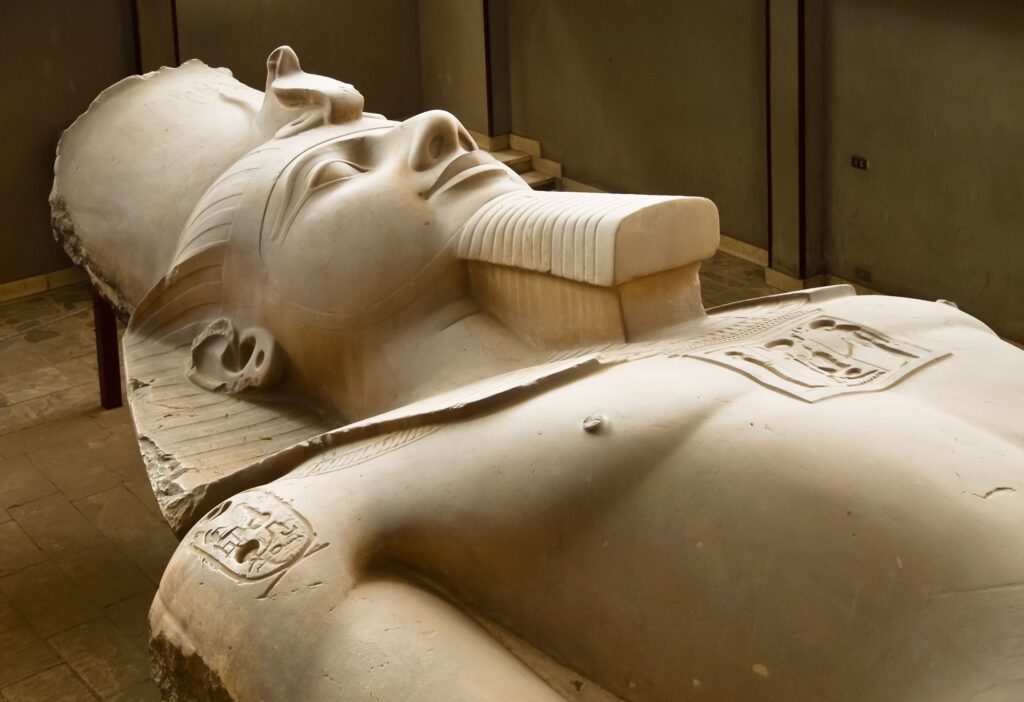
Siwa Oasis, a secluded paradise, captured our hearts with its unique blend of cultural richness and natural splendor. Here, the healing waters of hot springs and the warm embrace of local Berber communities offer an oasis of serenity in the heart of the desert.
Aswan, with its languid Nile and ancient wonders, unfolds a tapestry of serenity along its tranquil shores. The felucca boat rides and the ancient treasures of Philae Temple provide a glimpse into the unhurried pace of life that defines this southern city.
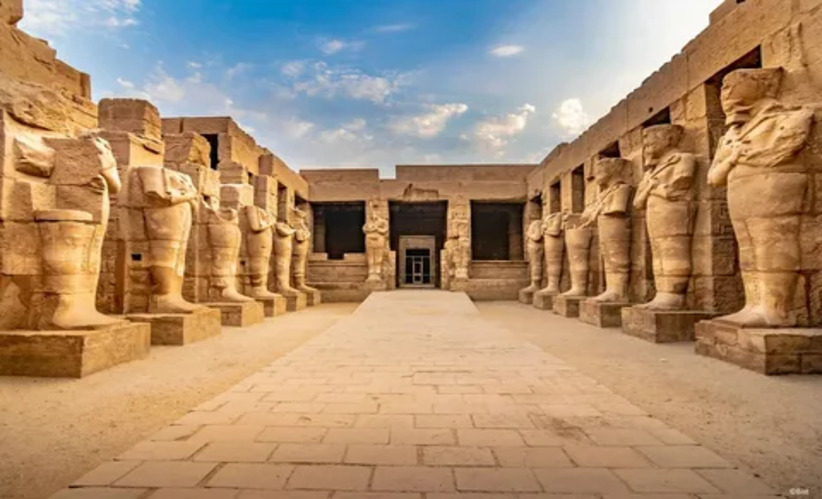
Nuweiba, nestled on the Red Sea coast, beckoned with its peaceful beaches and crystal-clear waters. From the thrill of sandboarding to the serenity of birdwatching at Lake Qarun, this hidden gem promised an escape to nature’s tranquil embrace.
Fayoum Oasis, a retreat near Cairo, unveiled a world where relaxation takes many forms. Whether birdwatching at Lake Qarun, immersing in local pottery workshops, or exploring ancient ruins, Fayoum invites a journey through time and tranquility.
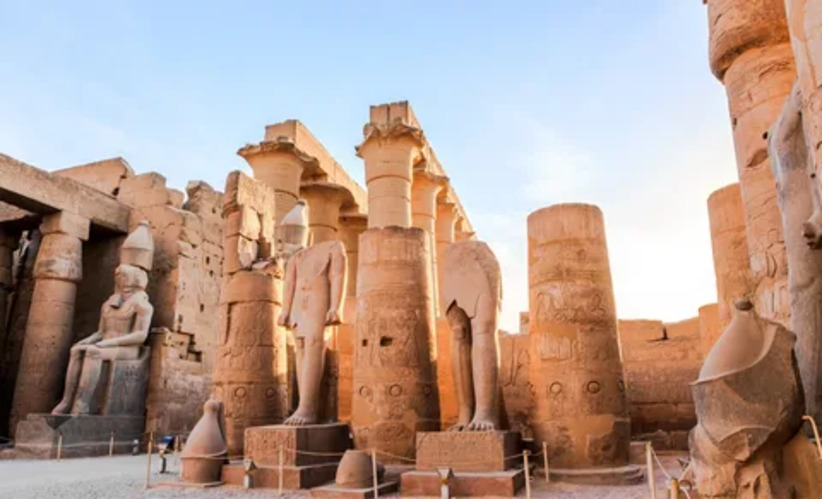
Marsa Matrouh, a Mediterranean getaway, offered a resplendent coastline where the sea’s clear waters meet pristine beaches. It’s a place where relaxation takes center stage, inviting visitors to surrender to the rhythm of the waves.
Luxor’s West Bank, a counterpart to the bustling East Bank, revealed a world of ancient echoes and contemplative beauty. Here, the Valley of the Kings and the local villages invite a more intimate exploration of Egypt’s profound history.

These seven destinations, each with its unique allure, weave together a tapestry of experiences that transcend the boundaries of time and space. From the vibrant marine life of Dahab to the ancient tombs of Luxor, Egypt invites you to embark on a journey of discovery.
As you consider your next adventure, remember that Egypt’s serene spots offer a diverse range of experiences, from underwater explorations to cultural immersions and tranquil escapes. Whether you seek the thrill of sandboarding or the solace of a peaceful beach, Egypt’s treasures await your discovery.
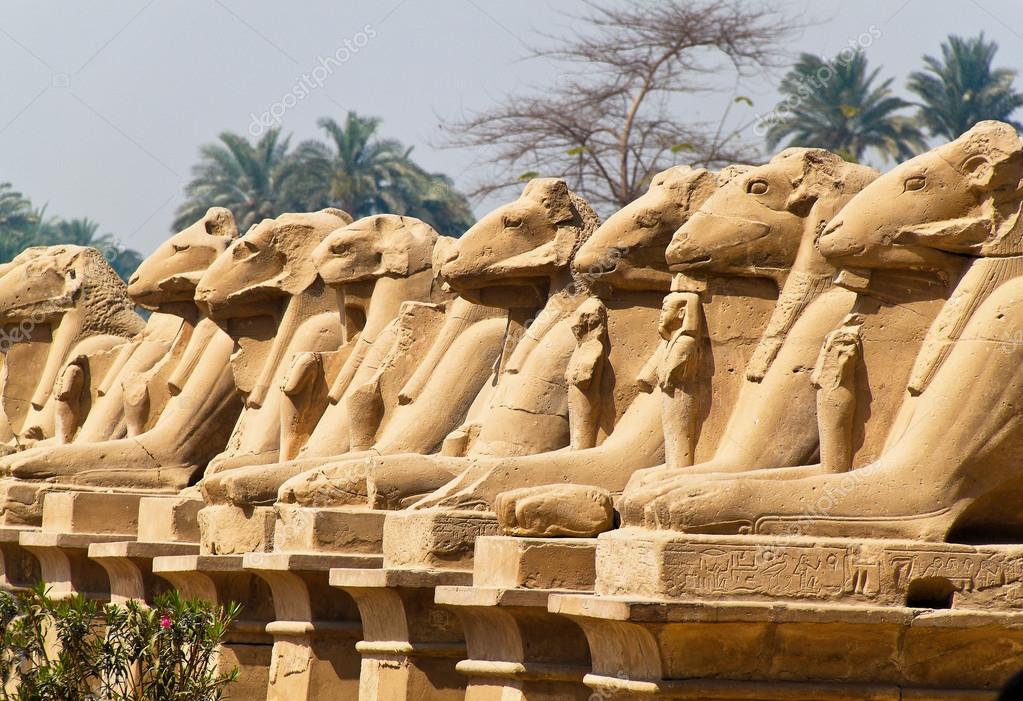
So, let your curiosity be your guide. Dive into the cerulean depths, wander through ancient ruins, and let the rhythms of Egypt’s serene havens become the soundtrack of your journey. The wonders of Egypt, both ancient and contemporary, await your exploration. Embrace the call of the Red Sea, the whispers of the desert, and the echoes of history. Your adventure in Egypt’s tranquil embrace awaits.
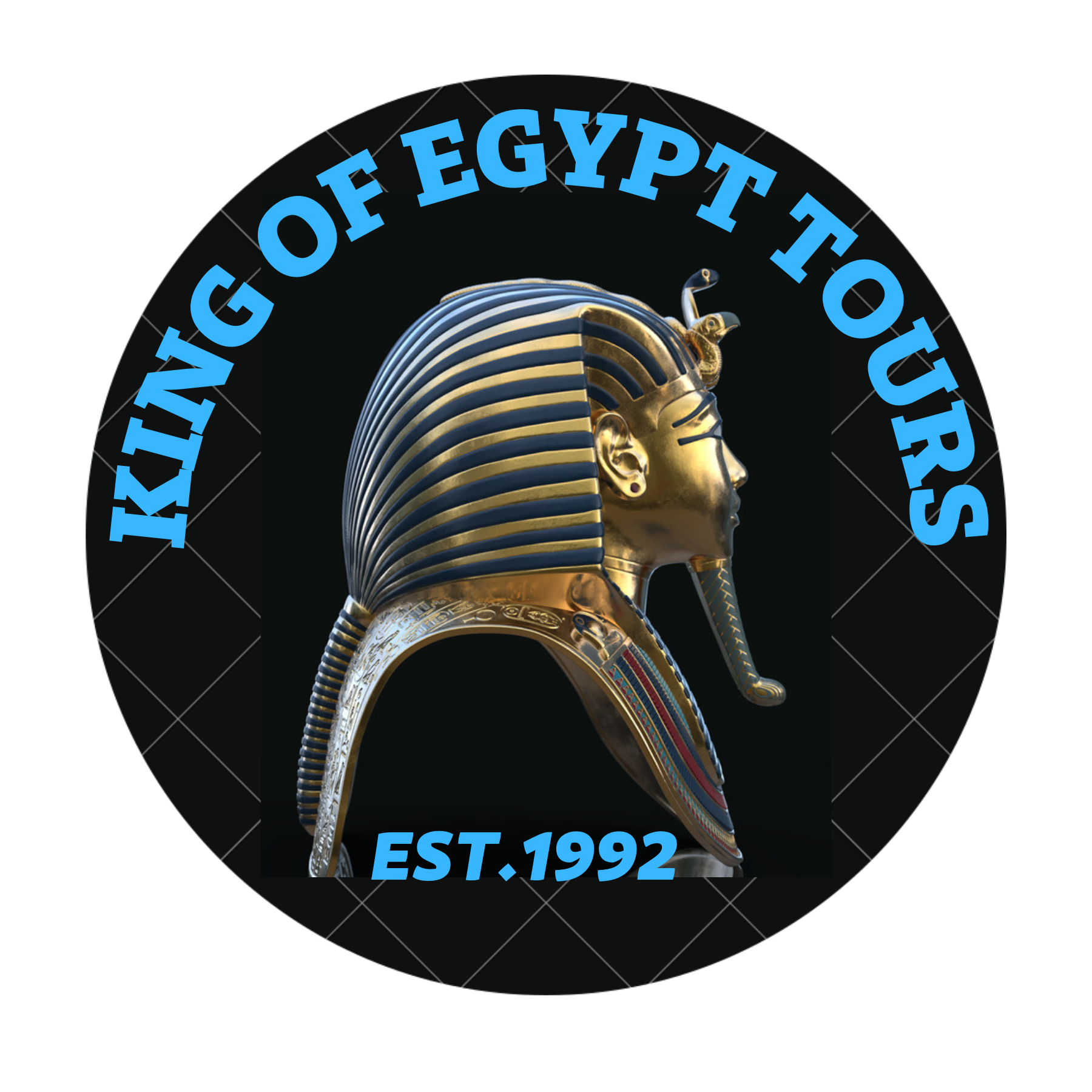
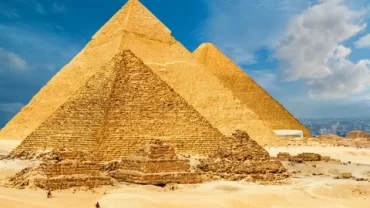

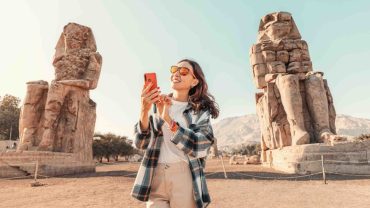

Comment (0)